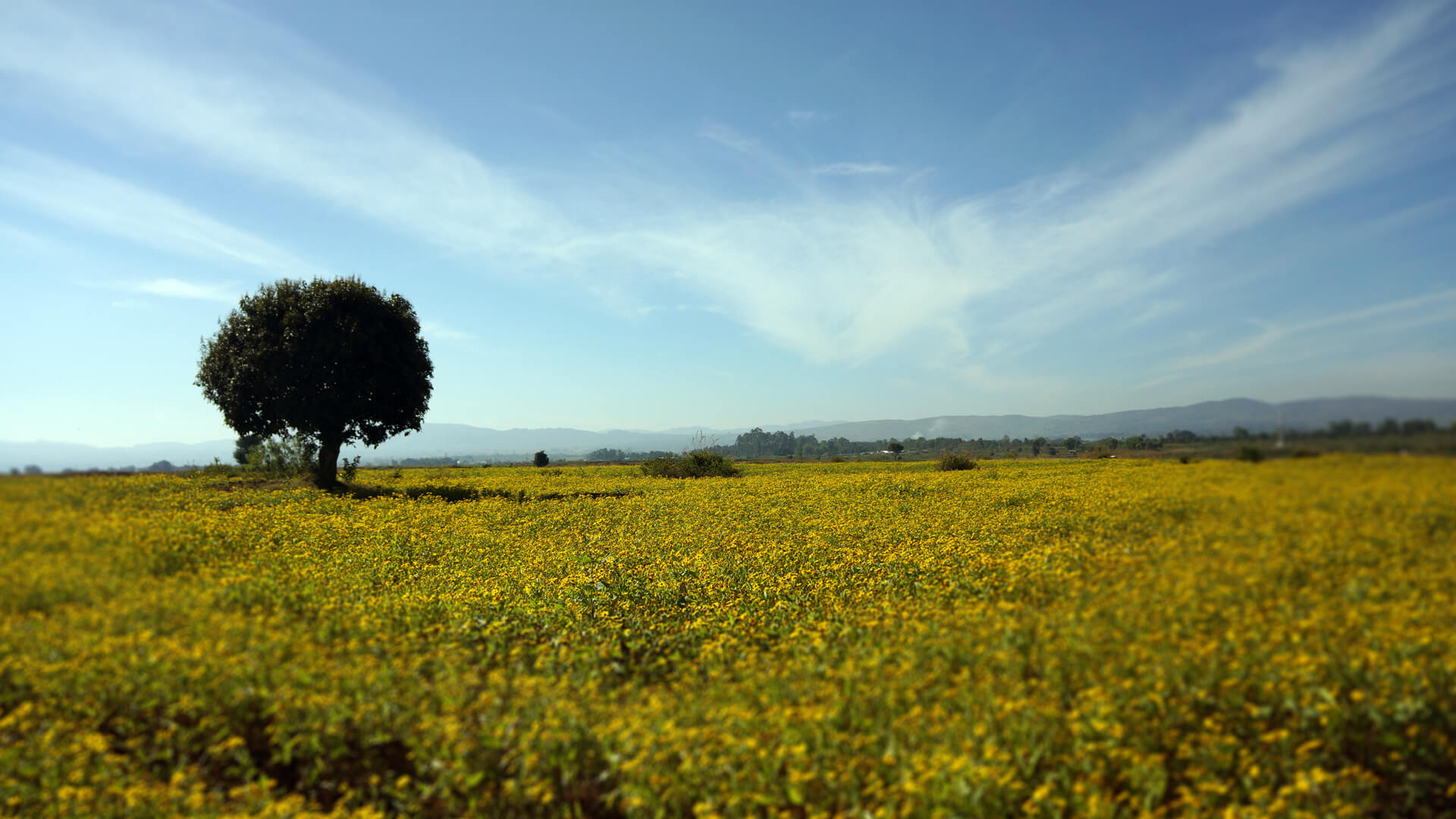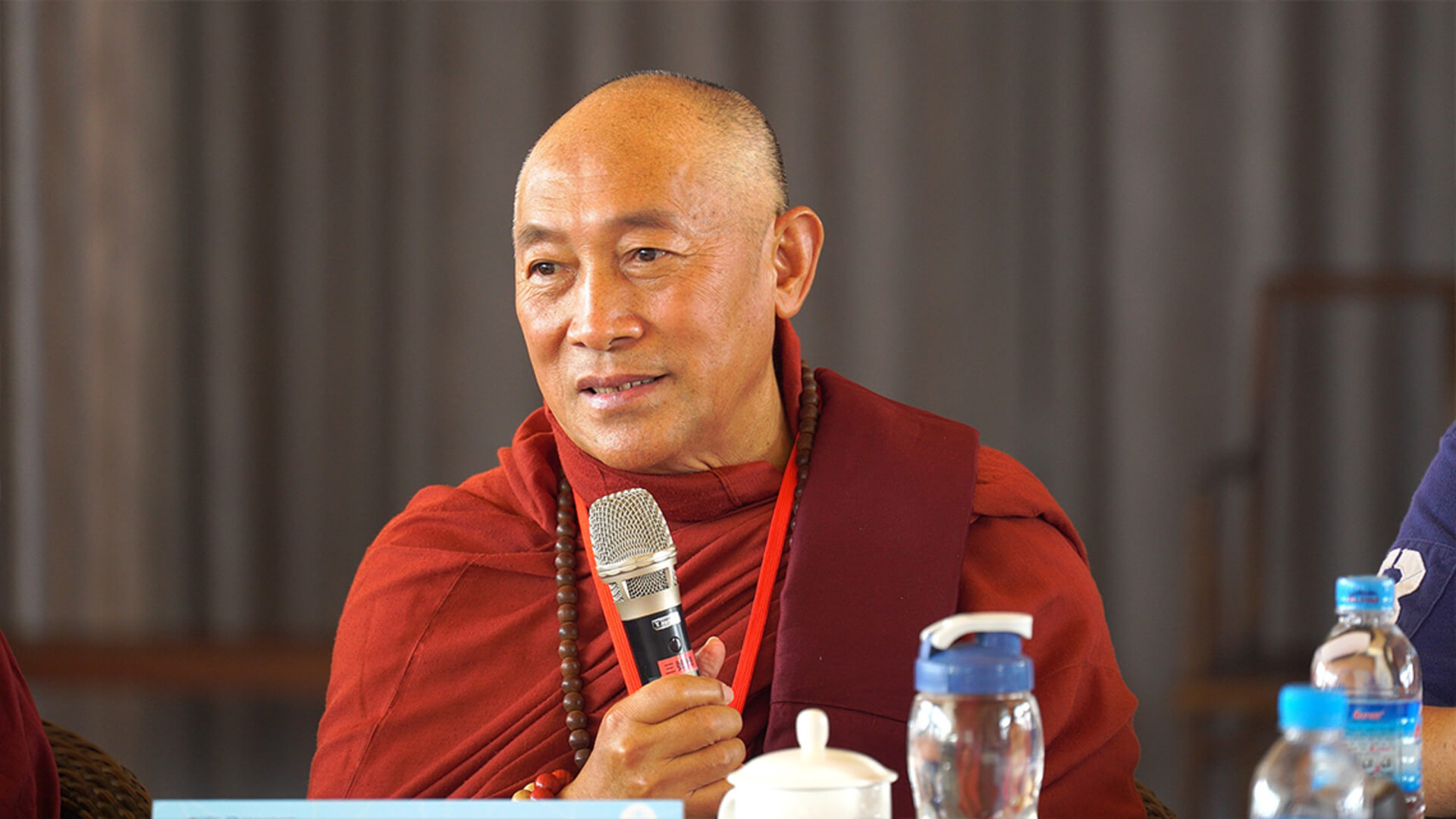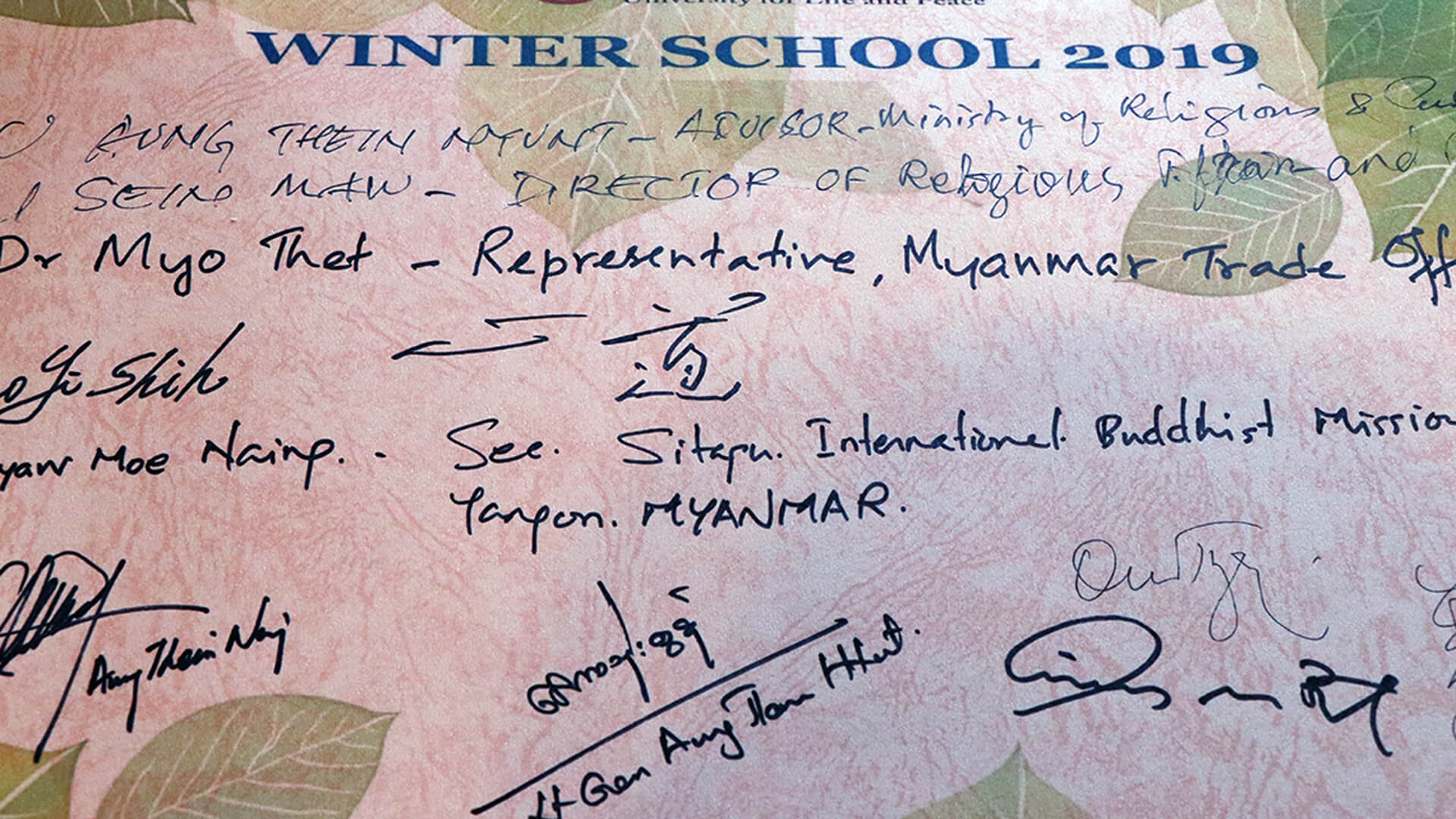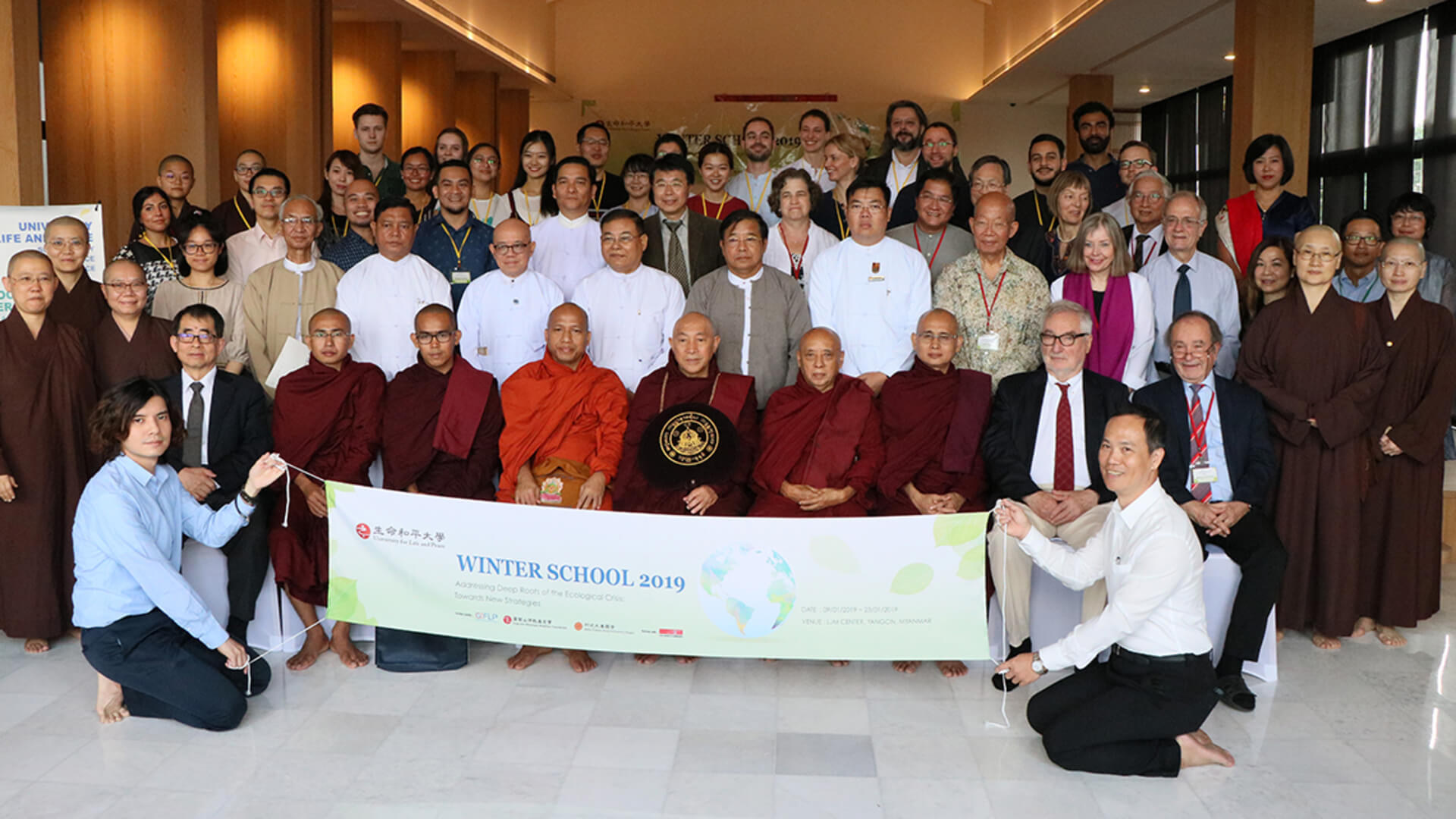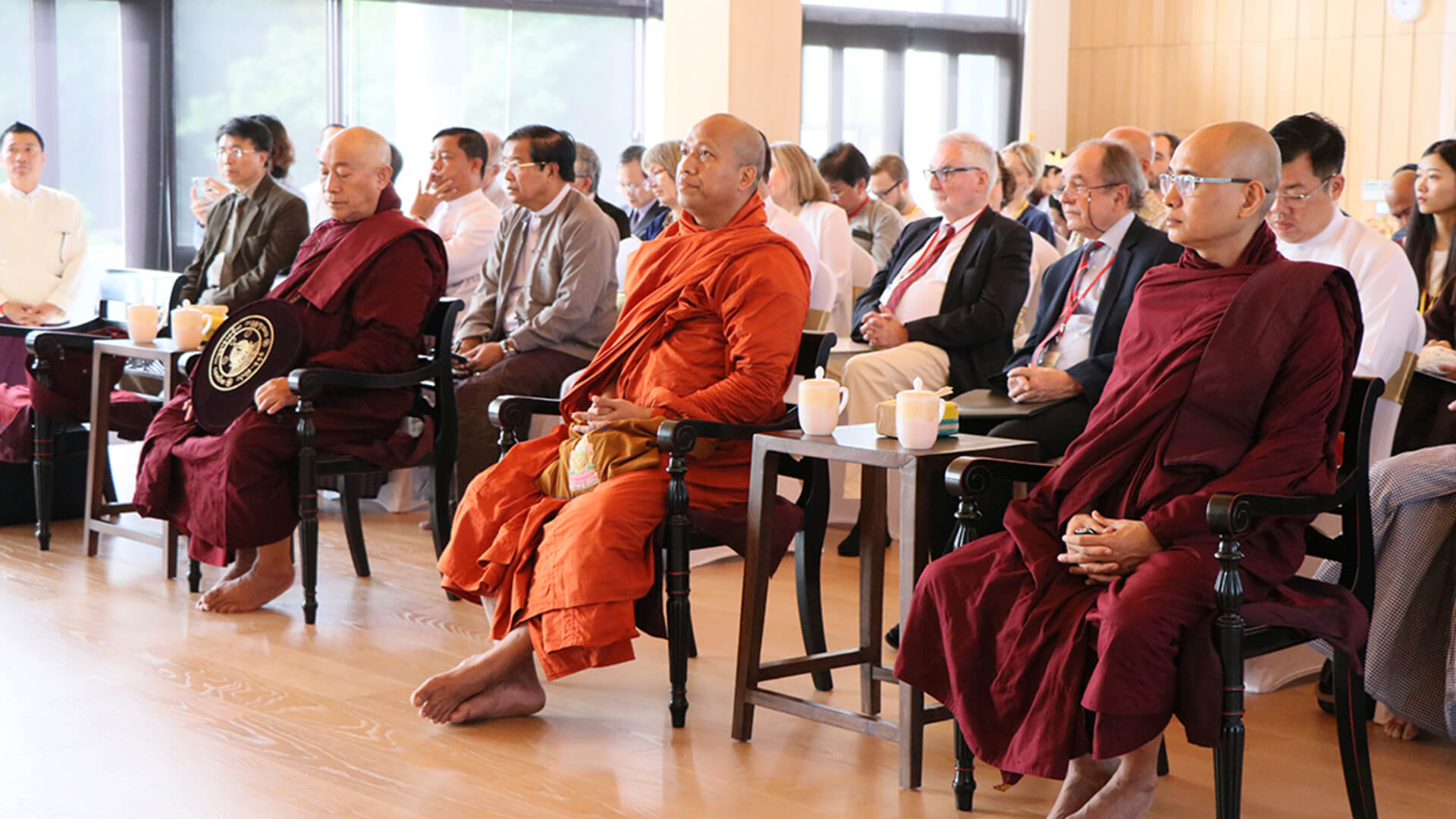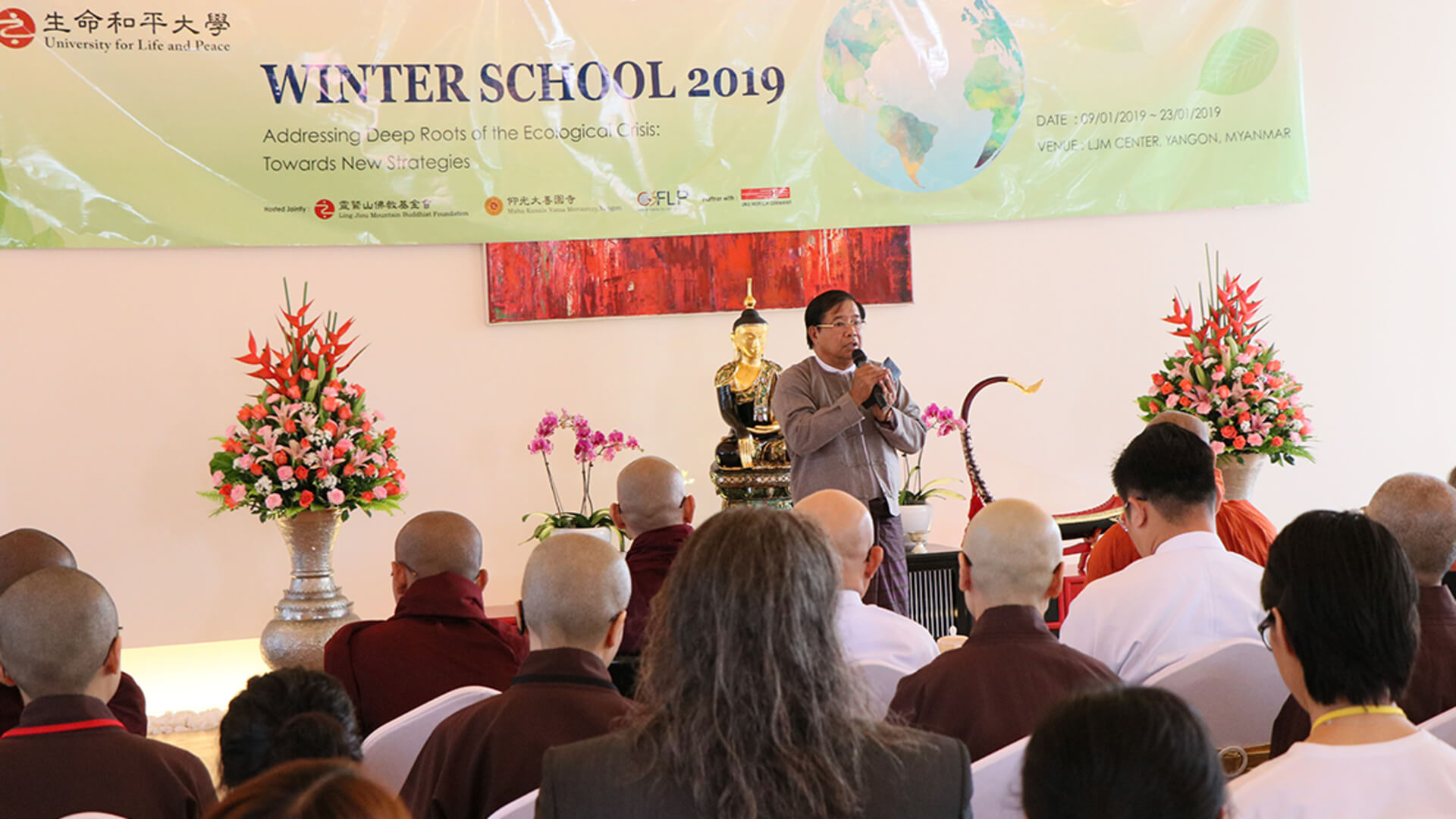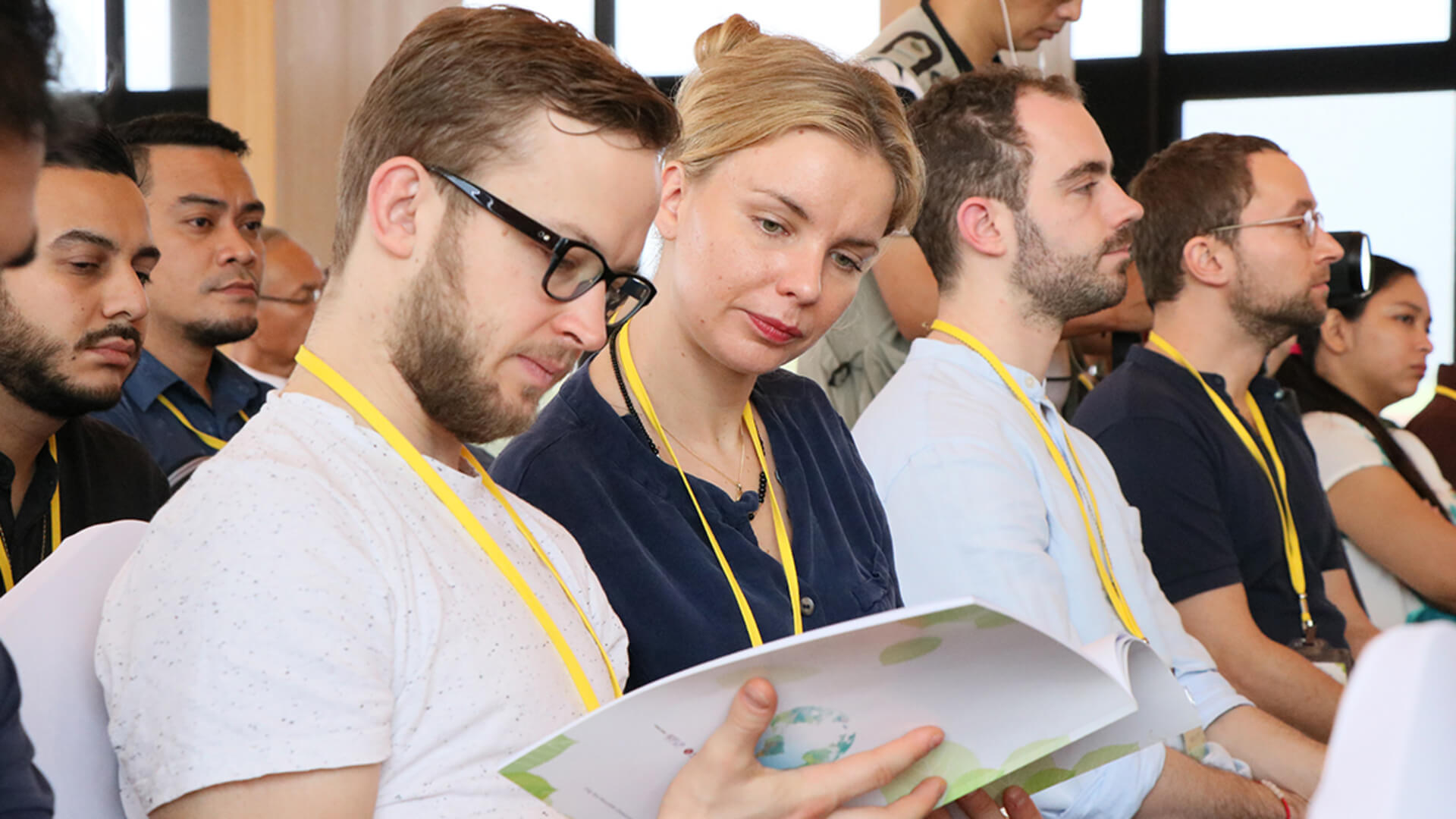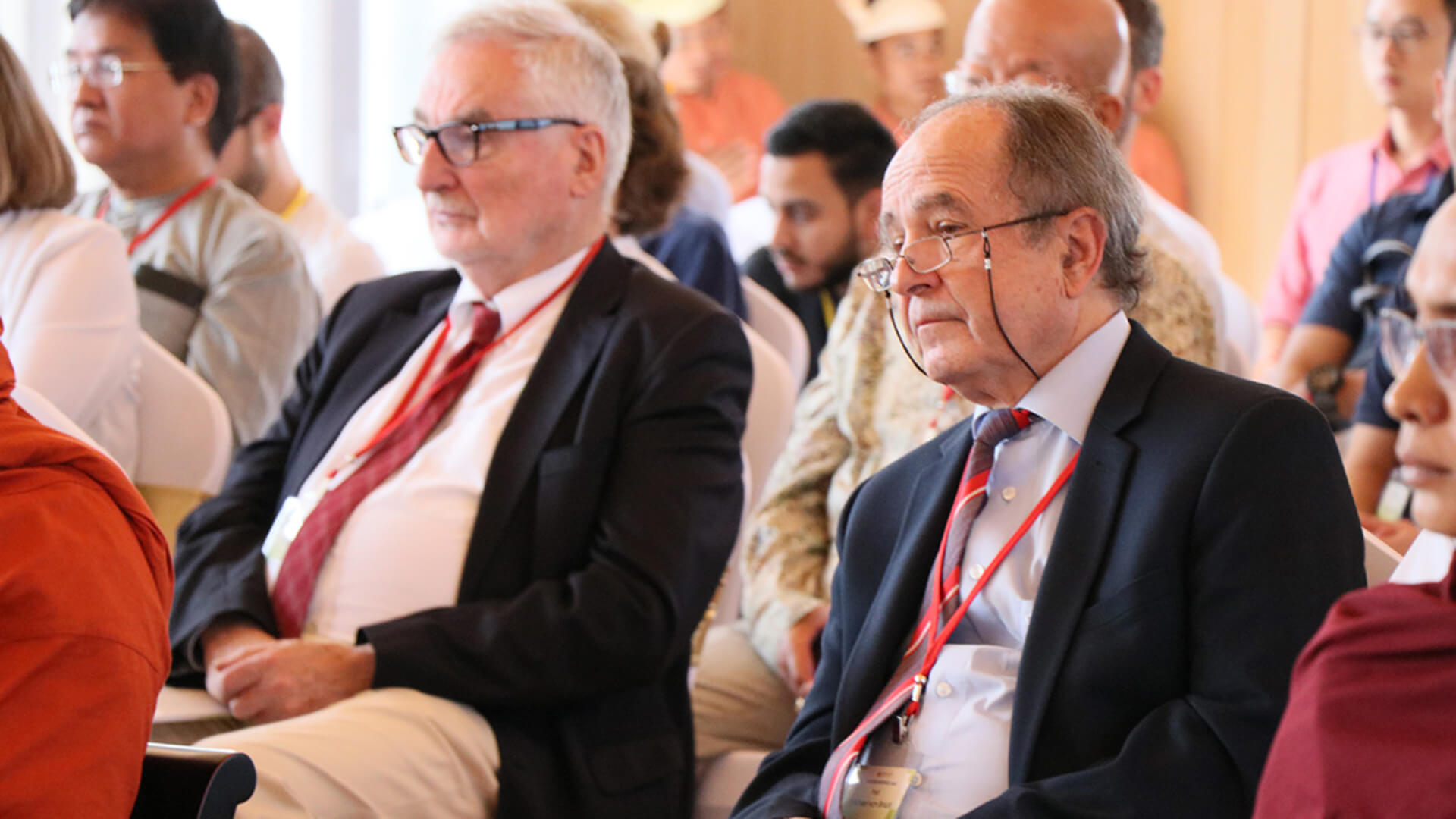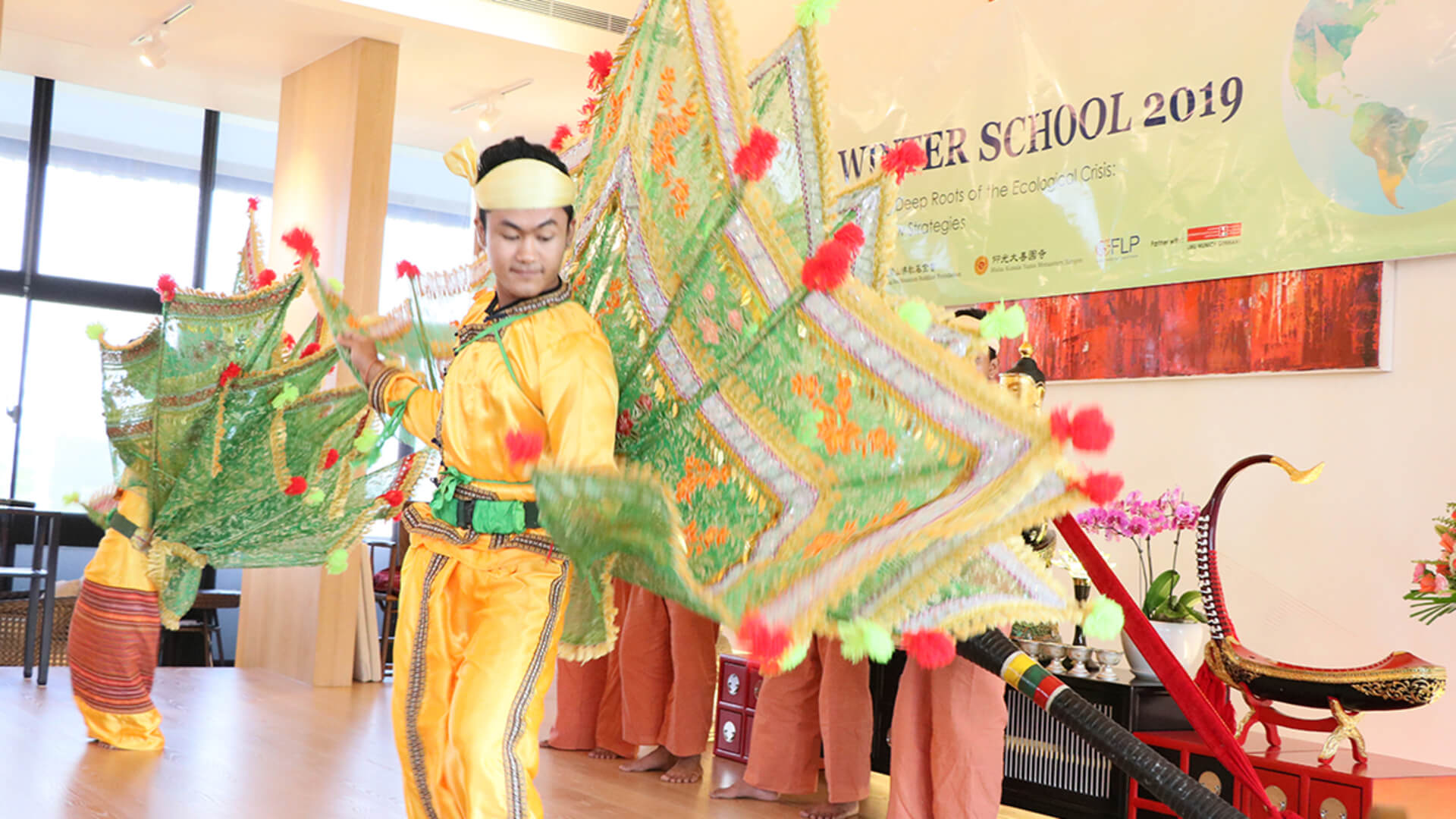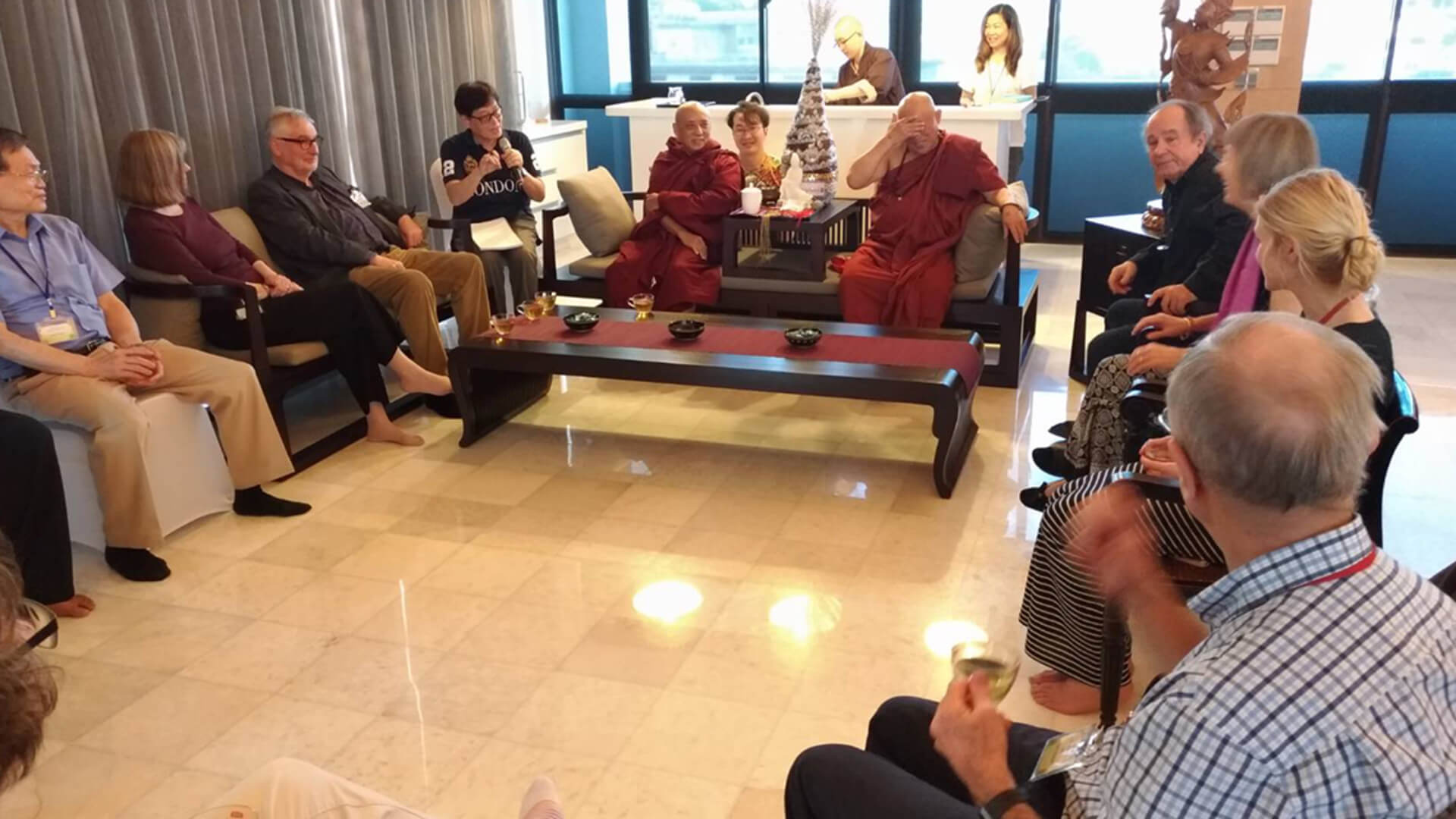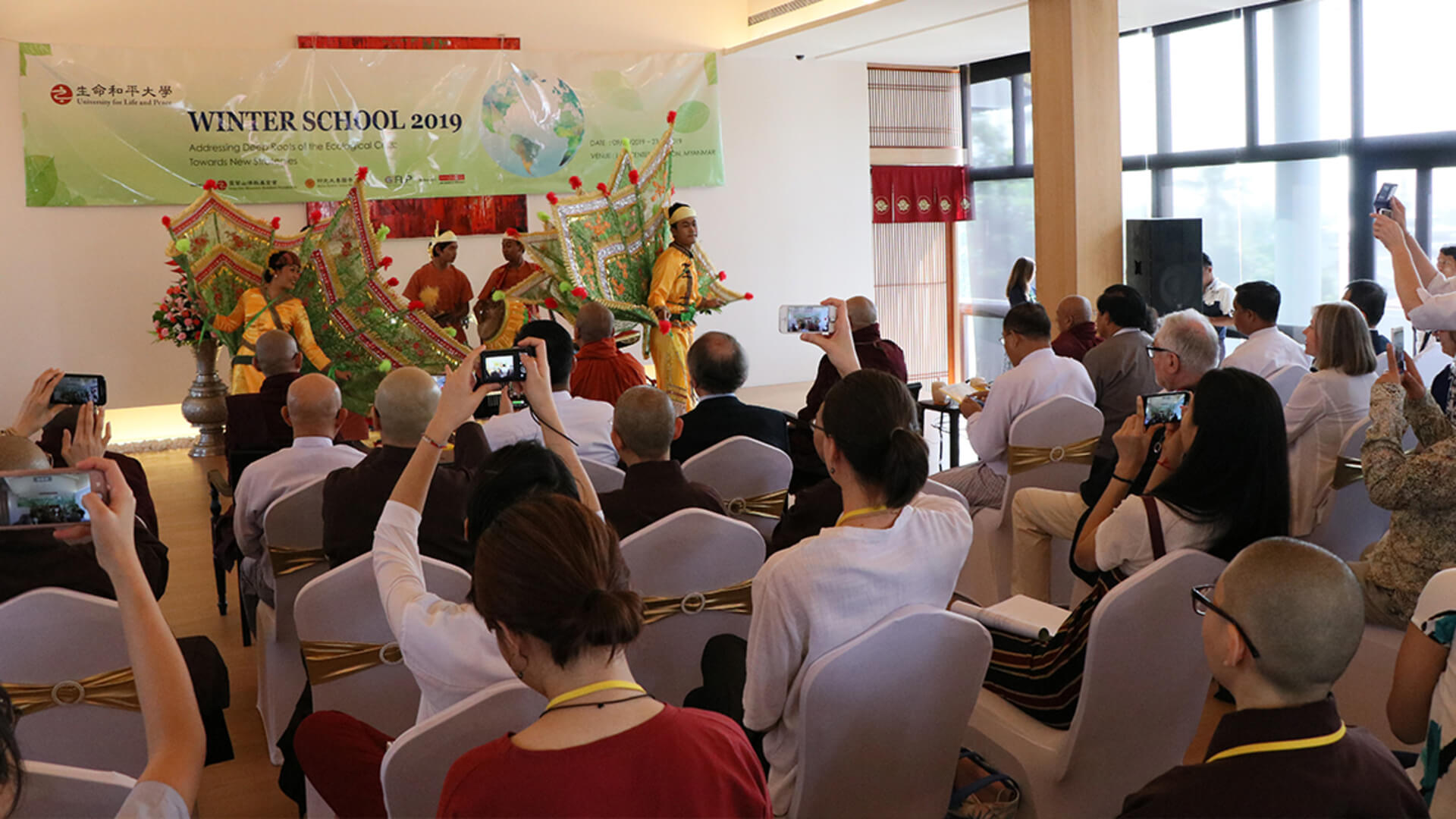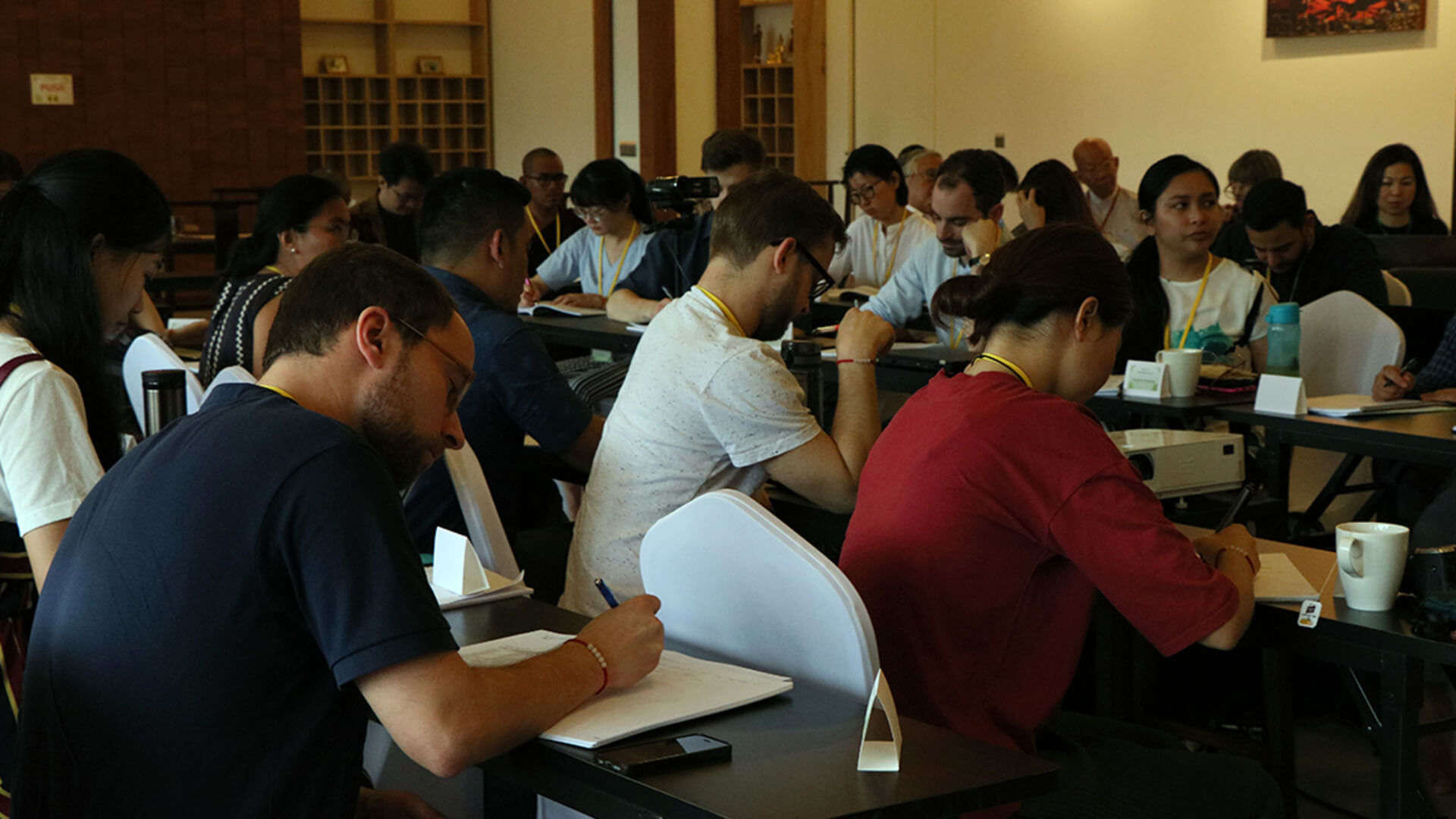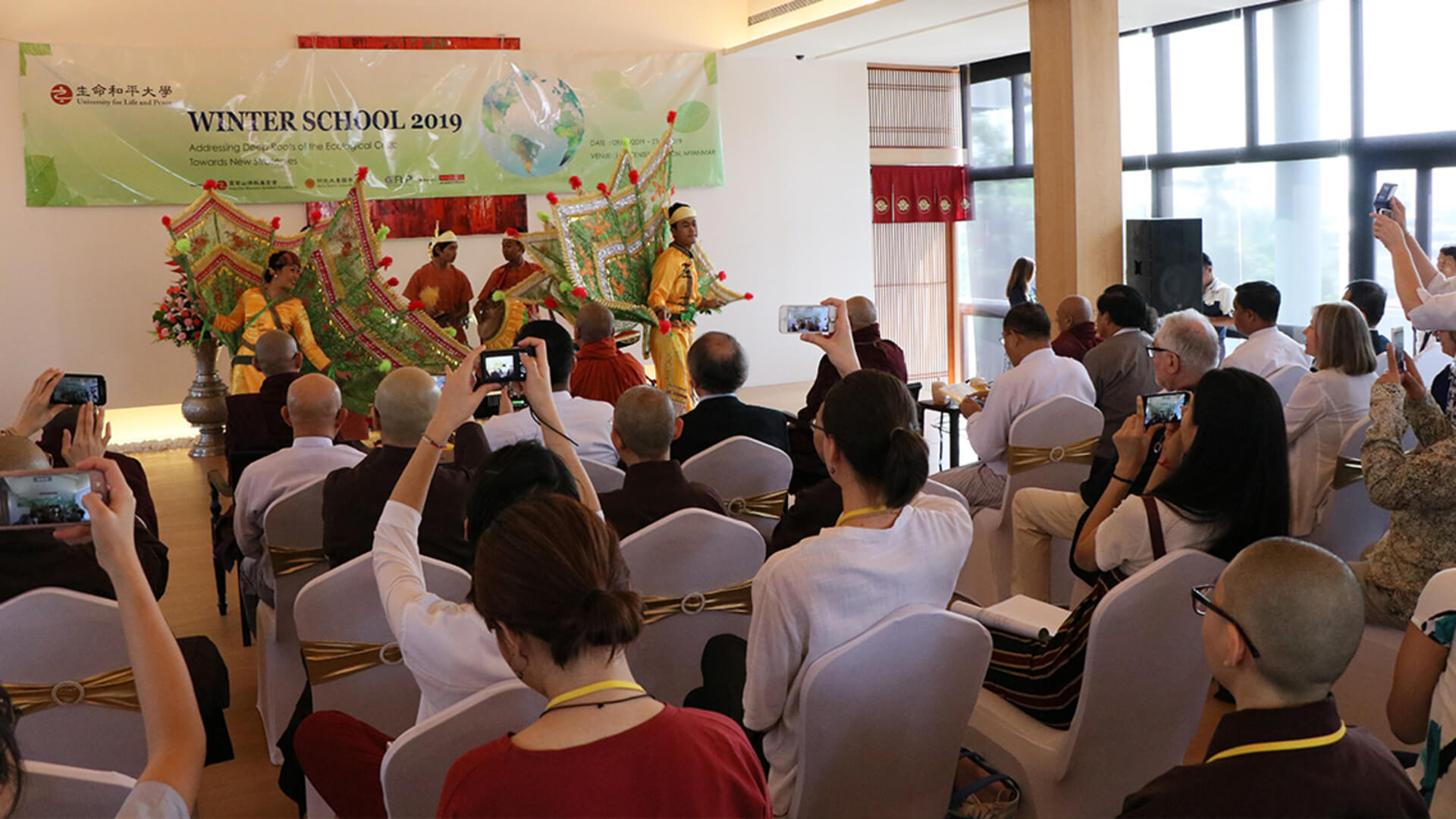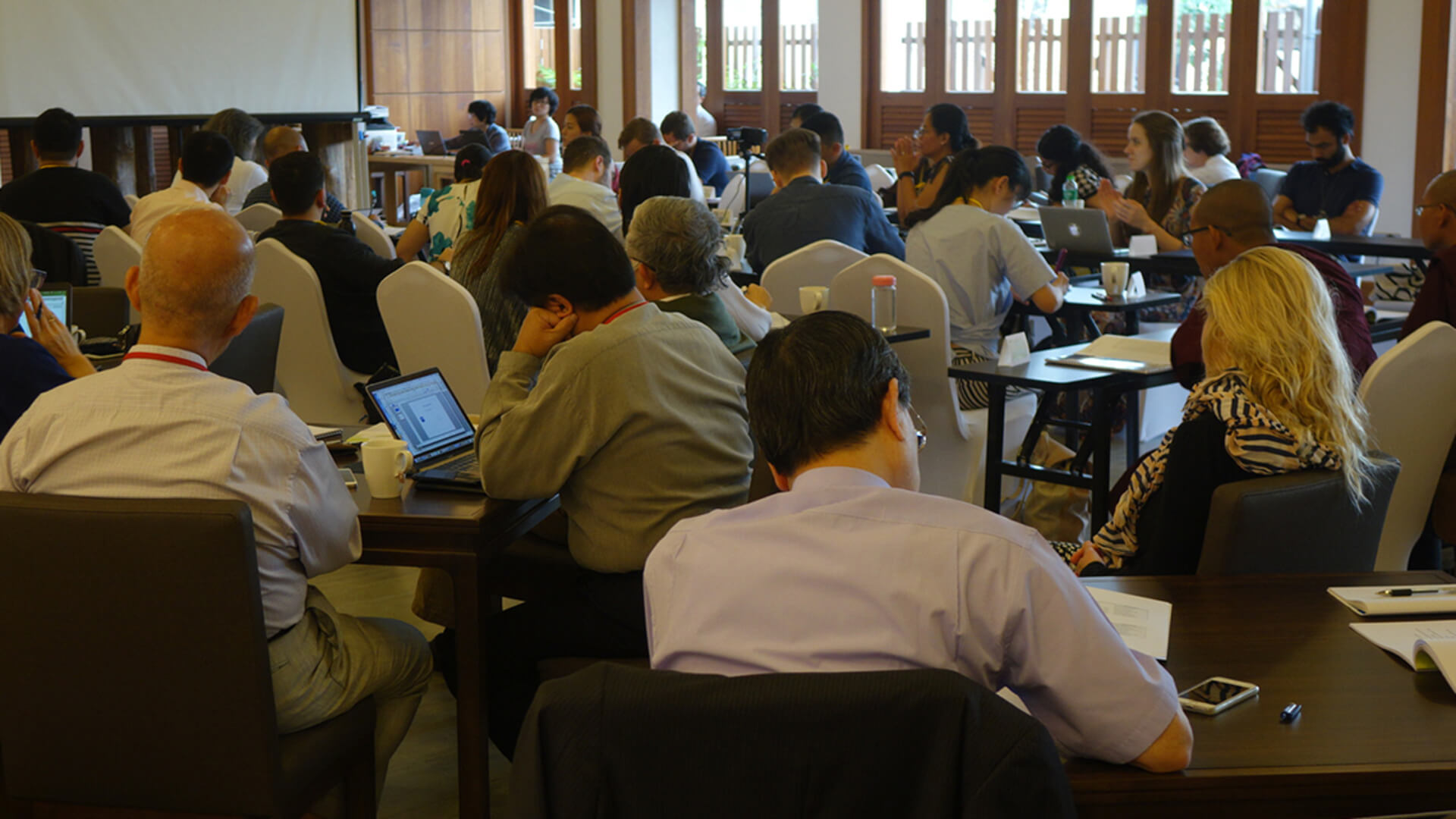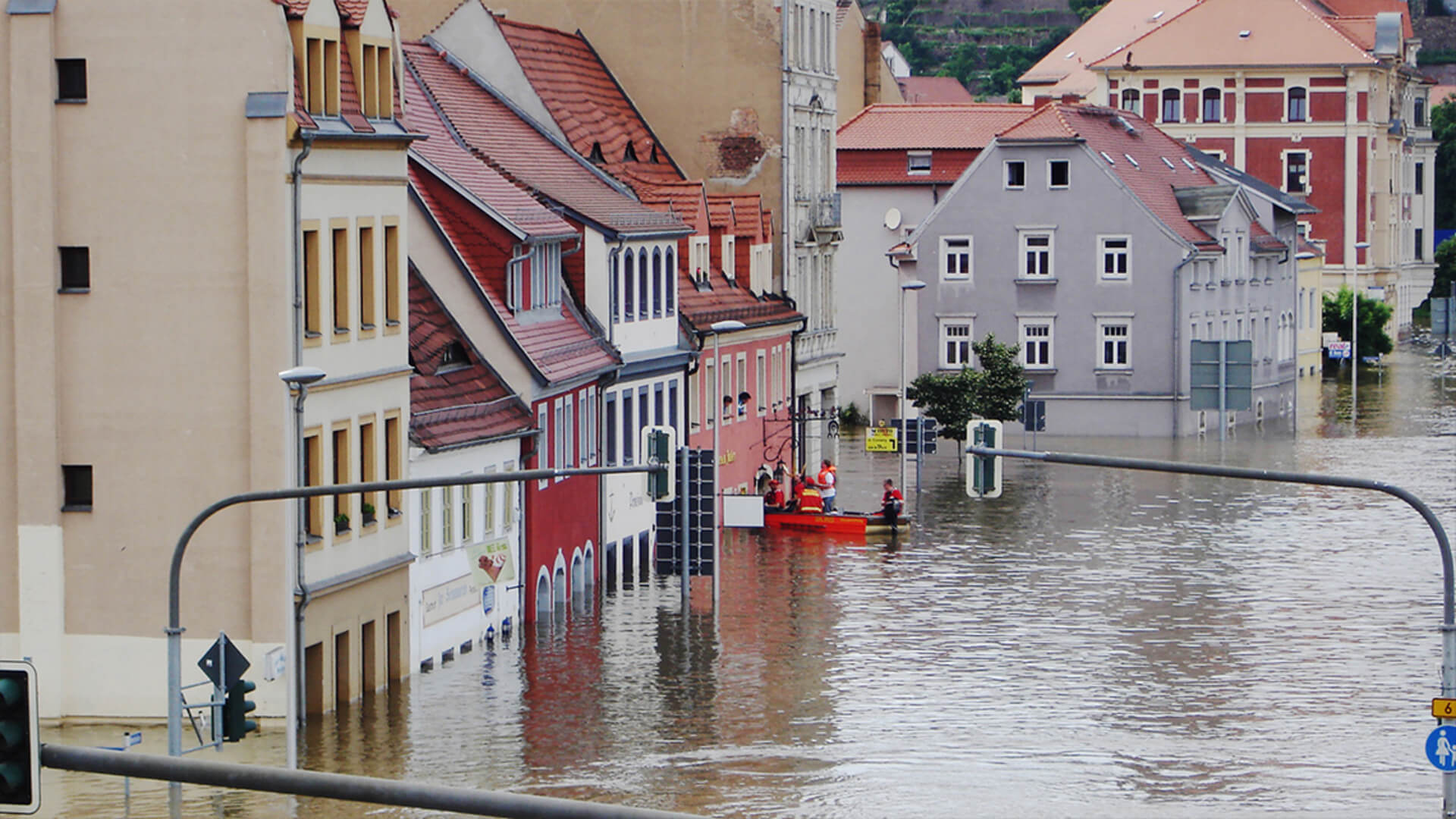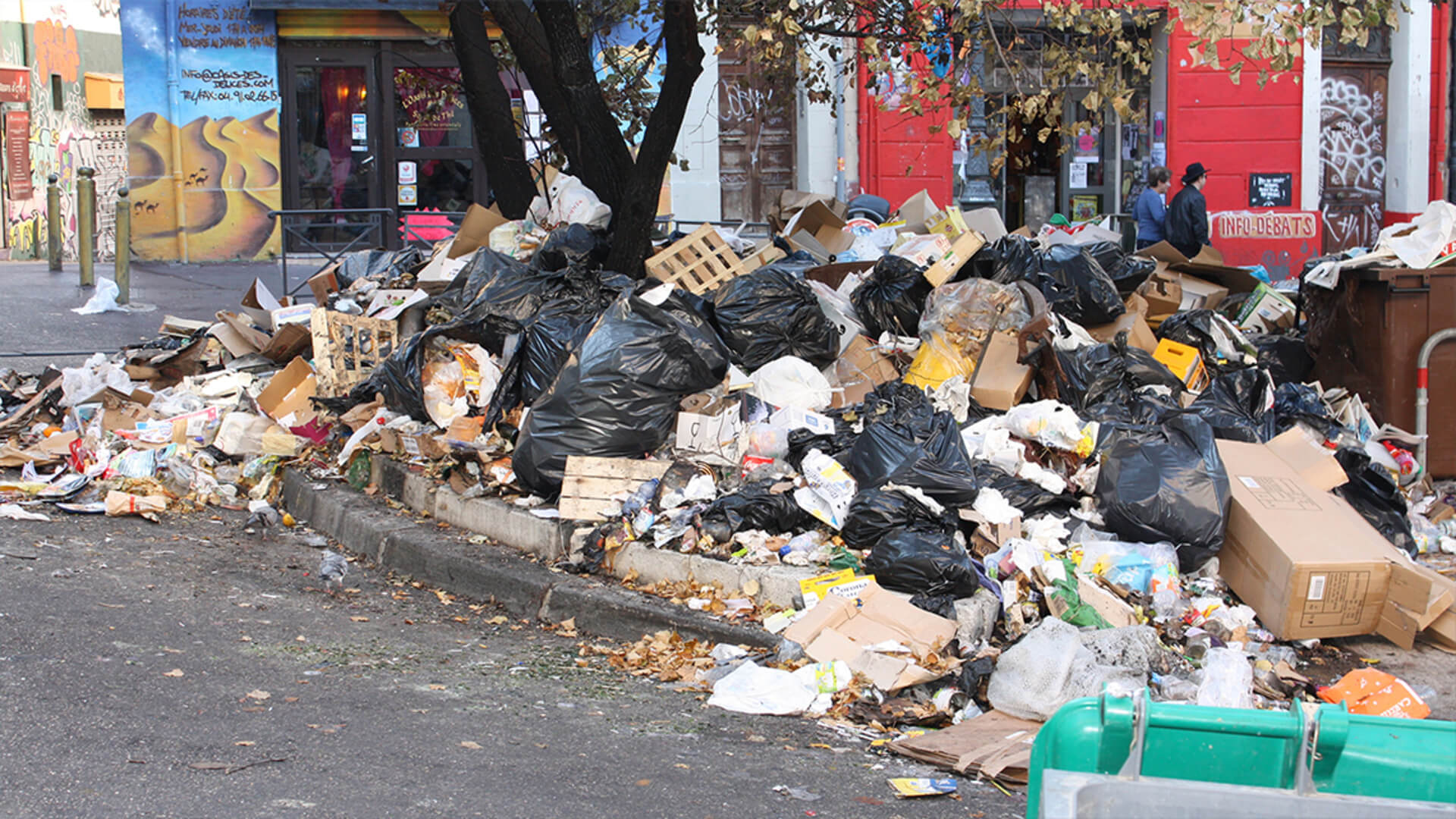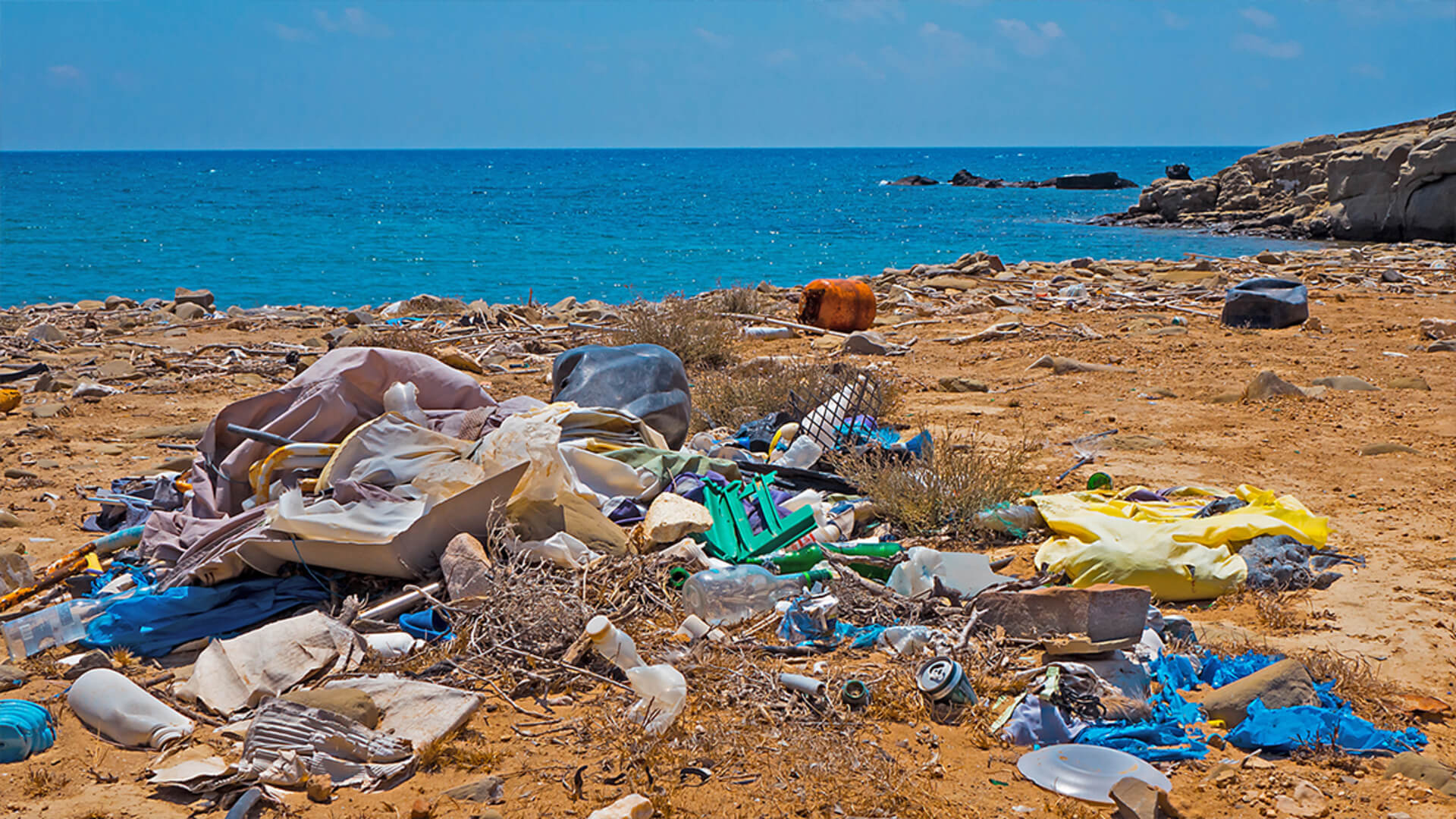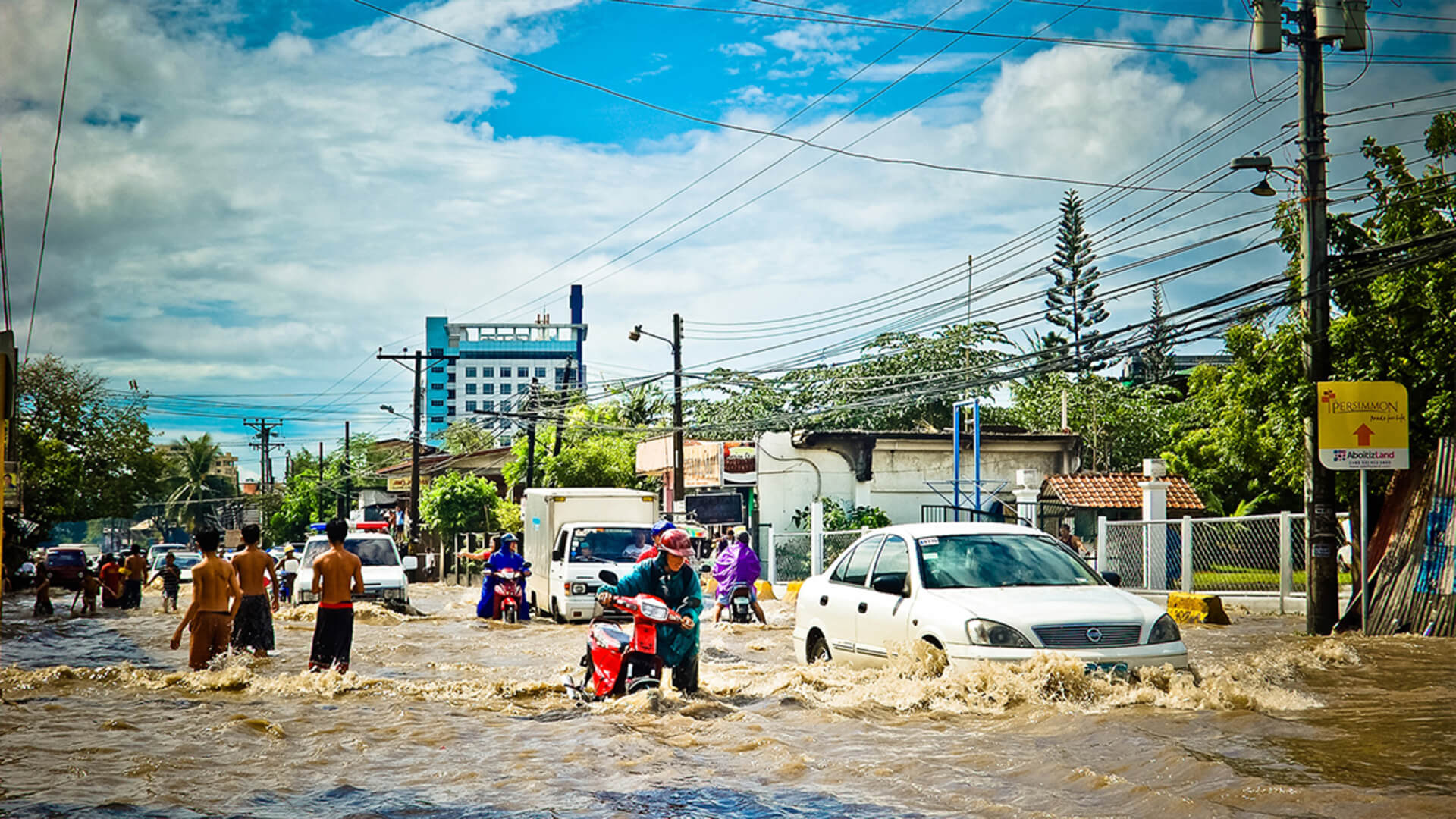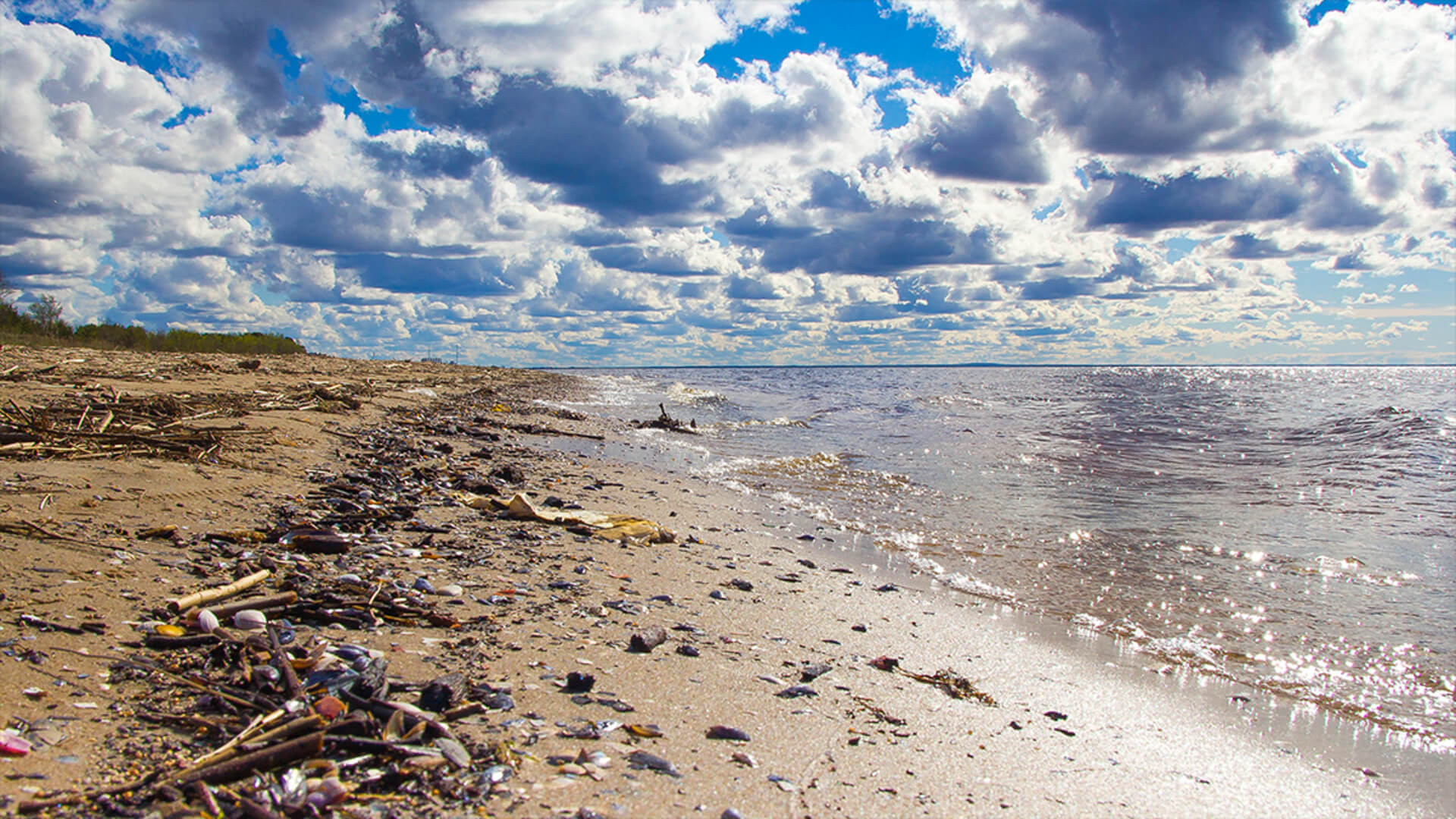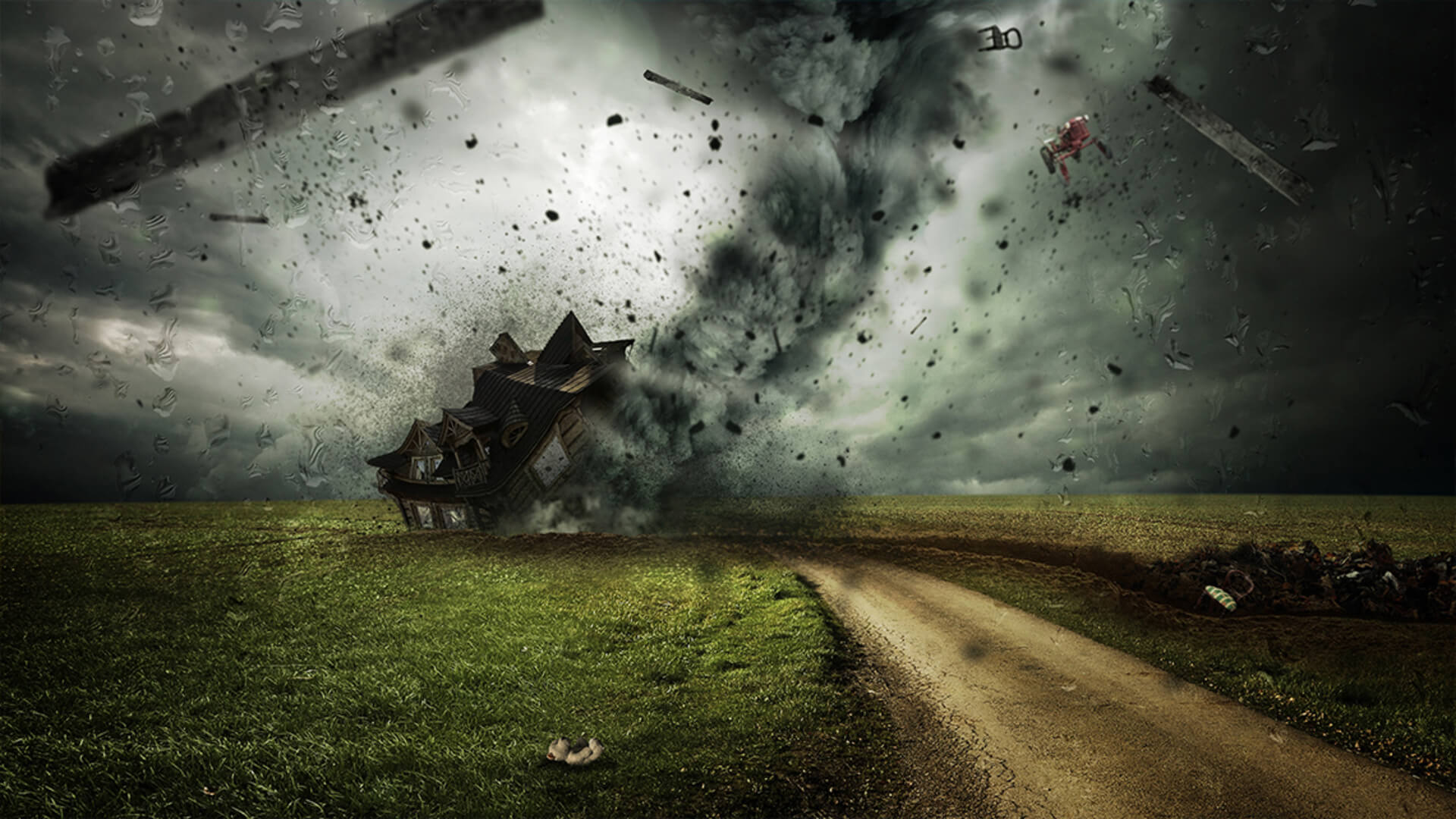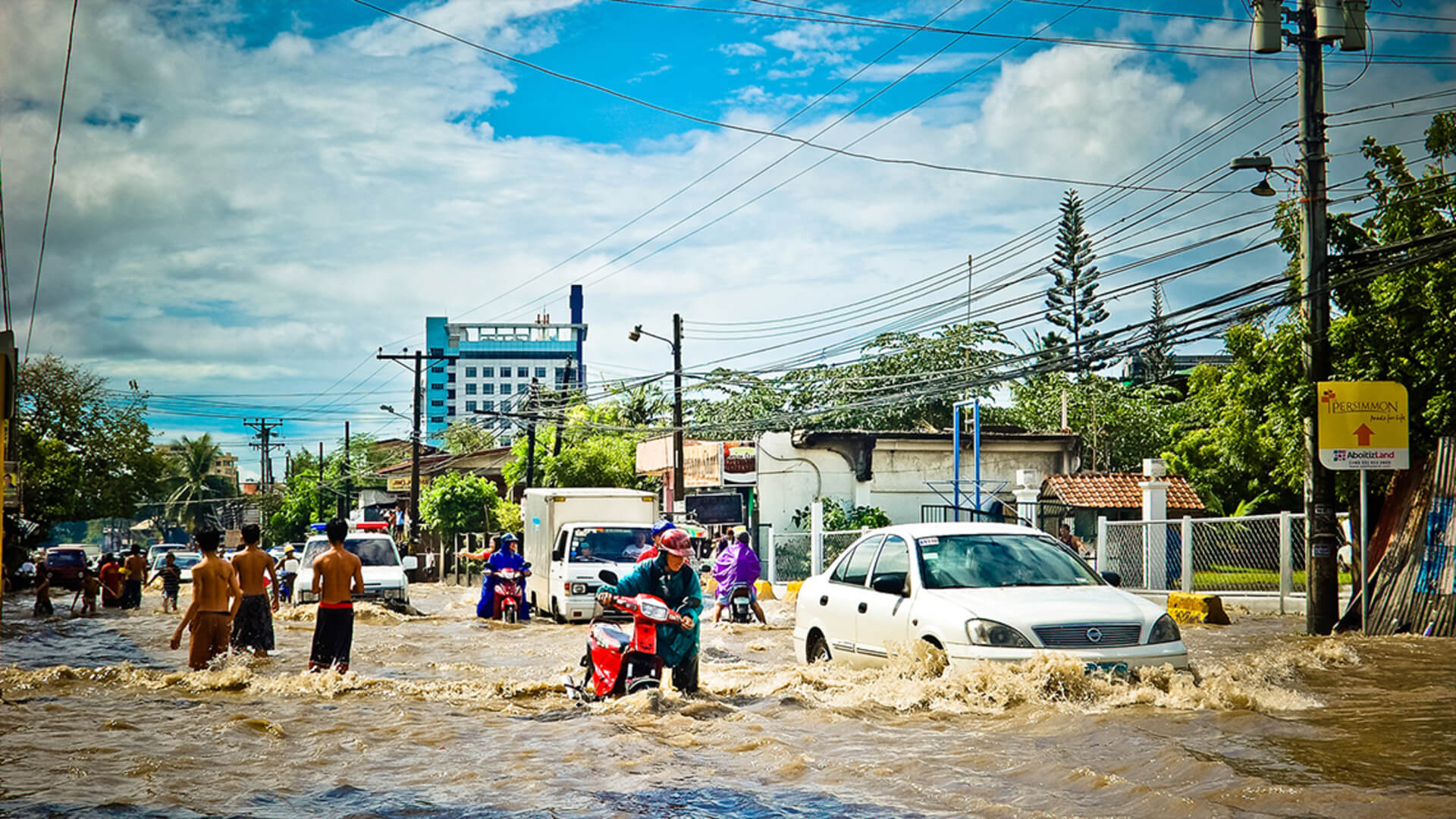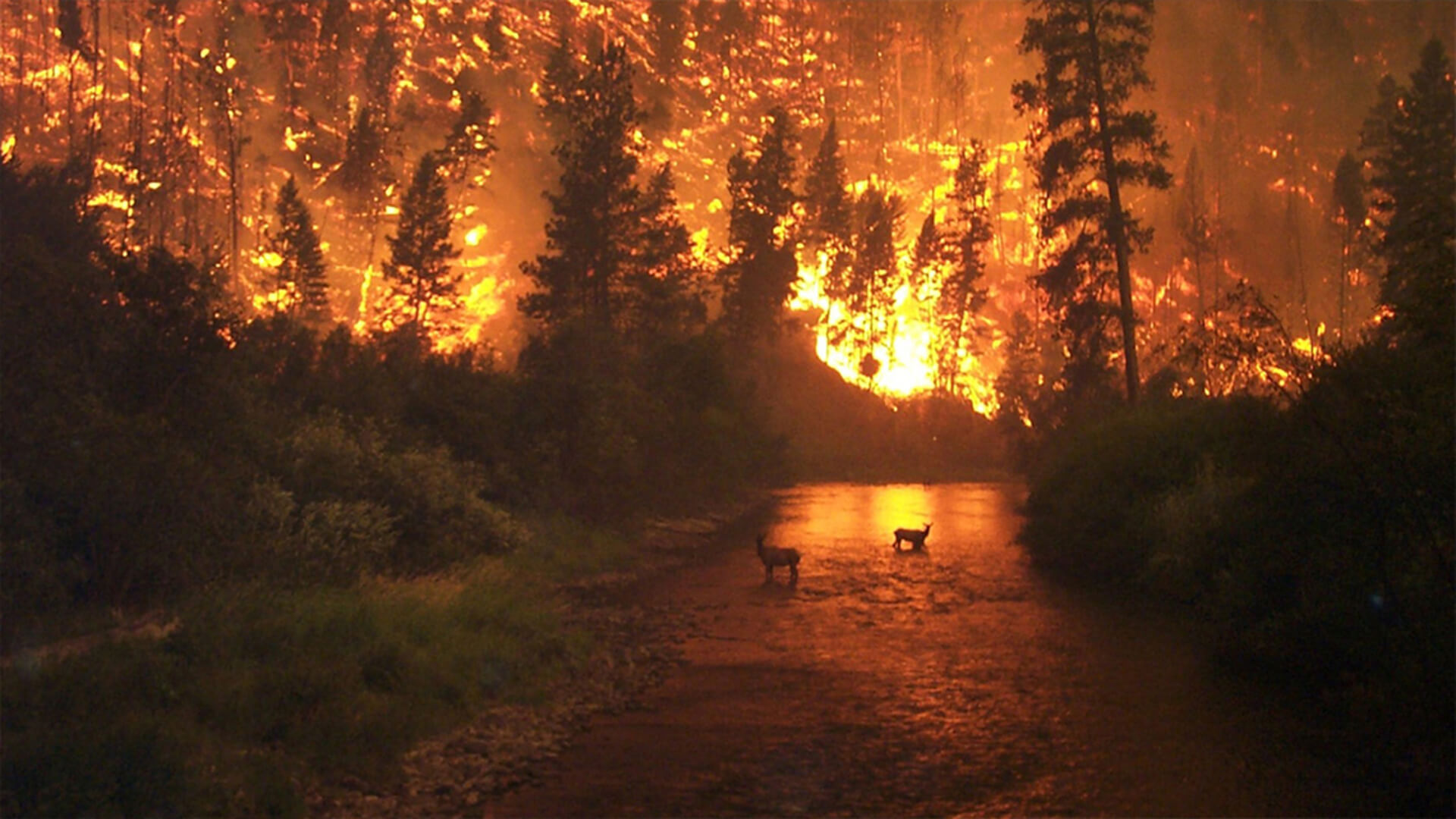The University for Life & Peace ignites ‘Loving the Earth’ Global Movement with Education
The average temperature for the month of December 2018, in Taiwan was 21.4 degrees Celsius, which marks the warmest December for Taiwan since 1897. The global temperature has been on a steady rise and it surpassed a 1-degree increase in comparison to the mid 19-century. A United Nations report issued in October 2018, pointed to a very tangible threat that global warming will break the 1.5 degrees ceiling as a tipping point within 25 years if no proactive actions were taken.
Accompanying signs to the climate change include drastic changes of the climate, the temperature of the oceans increases, the glaciers begin to thaw, mega earthquakes, tsunamis, typhoons, and hurricanes, etc., have become frequent disasters and they are signals for help sent by our planet. The butterfly effect refers to inter-changeable impact that can turn into chain reactions for the Earth’s beings. Global warming has already caused disorder of Nature’s seasonality to affect both the climate and the ecology with further impact on people’s food and health. We are of an interdependent, co-existing, life community, which means bad luck for humankind when something goes wrong for the Earth. Put differently, the time is of the essence to save the Earth before it’s too late.
To build a university for Mother Earth is to ignite the global movement of ‘Loving the Earth’ by way of education. The university will be dedicated to research work of healing the Earth by incorporating the solutions in people’s daily life. Dharma Master Hsin Tao says that ‘Loving the Earth’ ought to be the general direction of our life and a starting point after the awakening of life. To awaken the awareness of, and action-taking for, ‘Loving the Earth / Loving Peace’, while cultivating missionaries for Love & Peace, these are reasons why we are creating the University for Life & Peace.
All beings come with spirituality as Nature’s gift, and the same goes for ecology. The spirituality does not disappear. Only when people are blinded by insatiable desires their own spirituality and that of ecology become temporarily invisible. The University for Life & Peace takes spirituality for the core of its education for the exact purpose of retrieving the spirituality of yours and mine. When everyone returns to his/her innate spirituality, it becomes a matter of course to understand the close relationship of all beings as one, and that they are inter-dependent and -reliant. People will then change their behavior accordingly, which in turn will bring about changes for the world. The tilted ecology will then return to Nature’s harmonious cycle and rejuvinate to become healthy again as before.
The Preparatory Unit of the University for Life & Peace has an International Office in Mahatten, New York, where some 60 international experts collaborate to put together operations plans for the future university. Phase One will see the recruitment of students both domestic and foreign for its master and doctorate programs. The objective is to incubate future leaders responsible for healing the Earth by virtue of activating action plans of ‘Loving the Earth’ for communities both at home and abroad that include religions, academics, businesses, politics, NGOs, and the civic society. The University’s curriculum will incorporate sciences for two major domains: life-awakening and professional disciplines.
Life-awakening sciences have to do with spiritual training, philosophy, culture, and religions, as well as the studies to learn from the wisdom of various civilizations and their ecological viewpoints. By contrast, professional disciplines bundle applicable trainings for the Earth’s healing that span a spectrum from anthropology, life science, cognitive science, psychology, sociology, to peace studies and ecology research, etc. Cross-disciplinary and inter-science syllabus will see integration of teachings fit for co-operation projects for the ‘Loving the Earth’ movement. Applied science will no longer be stand-alone’s but integrated to benefit the students from early on with teachings to instill well-rounded perspectives worthy of shakers and movers.
The major difference that sets the University for Life & Peace apart from other standard universities lies in the set goal of imparting knowledge together with an outlook on, and attitude of, life in the broadest sense of the word. Besides striving to achieve academic results in research work, a higher priority has been set to predestine such results as dedication to the world that shall bring about improvement for the very existence of humankind. The education for implementation at the University will have global impact with trend-setting value propositions. Both the faculty and the student body of the University will begin with him- or herself returning to spirituality individually and change their course of action accordingly to impact friends and relatives, even their next of kin. As in the effect of resonance, such changes cause chain reactions from within all facets of the society to culminate in a collelctive awareness of ‘Loving the Earth’ pan-society. The enlightenment by virtue of such spiritual awakening is in fact what Dharma Master Hsin Tao often refers to in his much quoted phrase that ‘the world is at peace, when the heart is at peace’.
The University’s Winter School 2019 at Yangon, Myanmar, celebrated its commencement on January 9. Its two-week syllabus will run on the theme of “Marching toward a new Strategy by addressing the Root Cause of Ecological Crises”. 12 reputable international experts will employ the group studies module for students to learn from one another among themselves. The program was designed for student groups to collaborate and identify solutions targeted at issues impacting people’s livelihood.
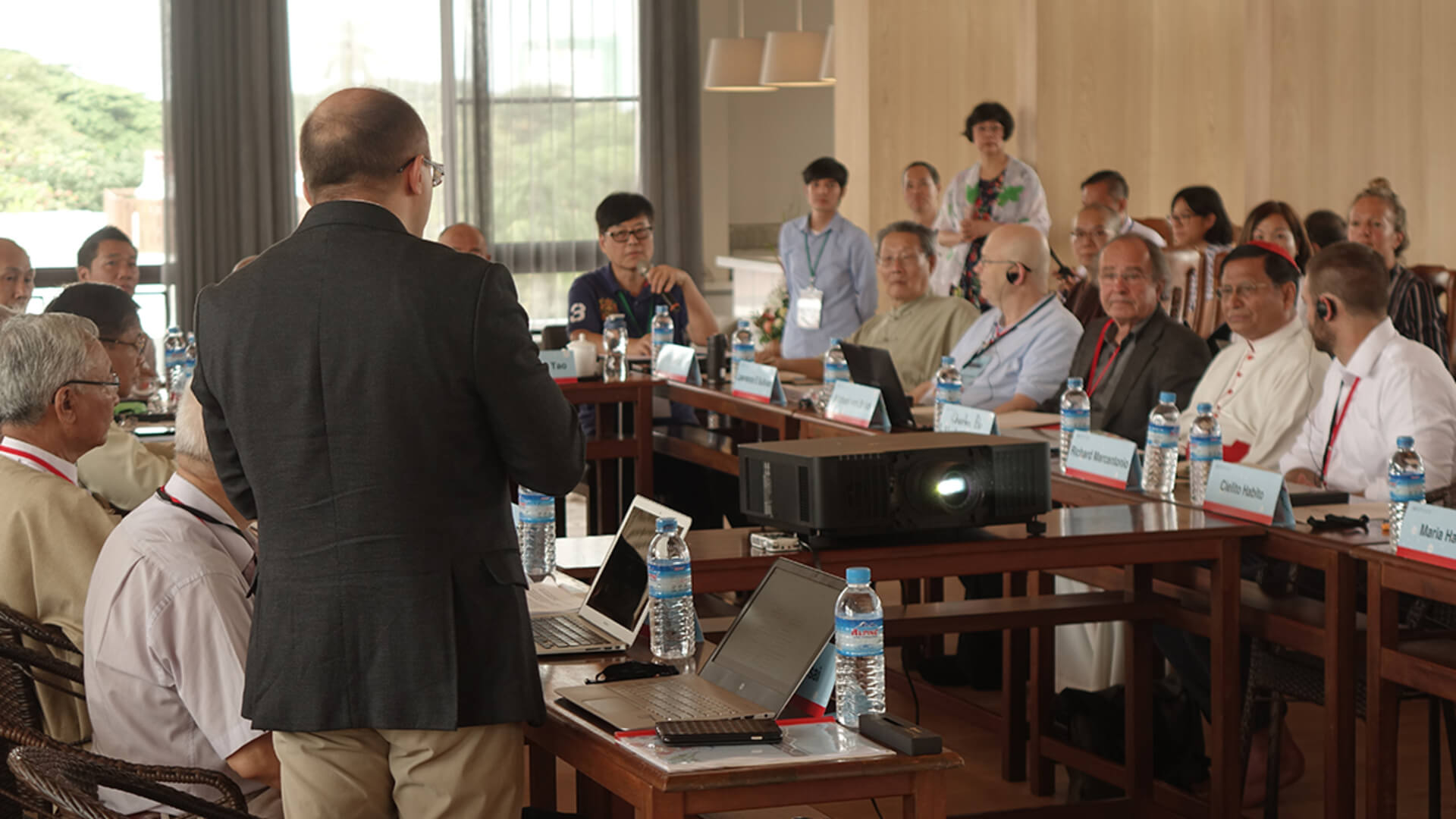
The Winter School 2019 in Yangon, Myanmar
The Winter School 2019 in Yangon, Myanmar: a pre-opening program of the University for Life & Peace and milestone of integrating spirituality and science education
Before its official launch, the University for Life & Peace announced to host a special pre-opening program under the banner ‘The Winter School 2019 in Yangon, Myanmar’, which will open on January 10. The pilot program will run on the theme of ‘Marching toward New Strategies to Treat the Root Cause of the Earth’s Ecological Crises’. Twelve well-known international experts will employ the group study modules to encourage learning from one another among the students during the course of two weeks. The Winter School aims at identifying possible solutions to the deteriorating issues affecting people’s daily life by virtue of case-specific cooperation.
The Inter-governmental Panel on Climate Change (IPCC) has already issued a warning that the tipping point of an increase of 1.5 degrees Celsius in global warming will happen in 2030 by the soonest, with all sorts of climate disasters ensuing. The North Pole will become ice-less and summers will be literally scorching. More than 90% of coral reefs will disappear, with the sea level rising exponentially to swallow up coastal metropolises. Countries will need to re-define their geopolitical borders.
In other words, we have only 12 years left to try turning things around from their current standing: severe environmental pollution, life forms increasingly threatened with extinction, the Earth’s ecological order out of sync, with the life of humankind on the brink of collapse. The Earth’s safety, therefore, is only then possible, when we return to the consensus and mission of the “Loving the Earth” ideology that transcends demarcations of countries, regions, races, and religions and instead connects academics, enterprises, politics, and even social movement of global scales. That is indeed the rationale why Dharma Master Hsin Tao promotes the University for Life & Peace as a pro-active outreach program and an action plan to substantiate the “Loving the Earth” ideal that the Ling Jiou Mountain remains committed to.
Dharma Master Hsin Tao says that “the ecology stems from spirituality and life is a continuation of the memory matrix. Because of the spirituality, all forms of existence are inter-connected and life continues to rise. When united with the spirituality, our ecology will display a positive interaction, a harmonious symbiosis, and an interdependent co-existence. In the case of a fallen spirituality, what we as humankind depend on for our livelihood will be gradually impeded by greed, anger, and ignorance that will eventually do away with any and all that life depends on, leading to an on-going destruction of the memory matrix of life and ultimately rendering the ecology unsustainable for Nature.”
The turning point for the Earth to return from being endangered and back to safety hinges on a spiritual awakening, and awakening of humanity and the awareness of the root cause of the Earth’s crises to the extent that the ethics of a spiritual ecology be promoted, its theorization and discourses become professionally established and a social charter and code of conduct for a harmonious symbiosis with Nature prevails.
The second meeting by some sixty international experts and scholars for a think-tank for the University for Life & Peace in the pipeline took place in Yangon, Myanmar, in October 2017. The experts are authorities on their respective disciplines and fields spanning a wide spectrum from medicine, biology, life science, philosophy, ethics, economics, sociology, law, theology, etc. They formed various sub-committees to help steer preparations for the future University and its operational blueprint. Professor Michael von Brueck from Munich, Germany, is in charge of the esteemed Board of International Advisors. The Professor led planning and discussions for the future University and contributed wisdom and professionalism to a sound and solid foundation of the University for Life & Peace, which has been taking up a more definite shape and form step by step over time.
What sets the University for Life & Peace apart from a standard university is its mission in passing on a mindset and an attitude of life besides what the curriculum offers, as well as its emphasis beyond achieving academic results by dedicating these to the world to make a substantial contribution to the improvement of the milieu of mankind.
It is in the design of the University that its mission will yield results to have wide-ranging impact for the world and achieve new milestones in creating values. Put succinctly, the University for Life & Peace will amplify how individuals return to spirituality and influence friends and relatives and even the next of kin by embracing and embodying changes themselves, pretty much similar to the effect of resonance that gives rise to chain reactions through different segments of the society inducive of a collective consciousness of “Loving the Earth”. Such enlightened awakening of spirituality, in effect, is a realization of what Dharma Master Hsin Tao always refers to in his famous quote that ‘the world is at peace when the heart is at peace’.
It may take another three to five years for the University for Life & Peace to reach the level of fund-raising sufficient to sustain its operations. The Winter School 2019, Yangon, Myanmar, as its special, pre-opening program with foresight is both relevant and applicable. As the first step on its way to a meaningful milestone for the future University for Life & Peace, the pilot program will also mark the first step of a promising future for humankind as well.

Opening Remarks by Dharma Master Hsin Tao on the Occasion of the Commencement of the 2019 Winter School at Yangon
Teachers and students, Amitabha!
I believe we all travel afar for thousands of miles to meet in Myanmar for a calling and a mission. There is no other way to call it.
The Commencement today can be very emotional and significant for each and every advisor who has ever been part of the collective effort. The Winter School consists of seed faculty members and students from more than 15 countries and regions. Your participation will mark a key milestone in education where spiritual values and scientific professionalism work closely together. The Winter School won’t be long, but our hearts are close to one another and they are enthusiastic, solemn, and full of expectations.
Ecological crises in recent decades have become the harshest reality on the Earth. Extreme climate changes and extinction of life forms have appalled people and shocked us to the core. The recent alert entitled ‘The Critical 12 Years’ issued by the United Nations prompted our realization that actions can no longer be put off any further.
Cross-disciplinary researches have led to the notion that the cycle of the Earth’s civilizations is by no means limited to the short millennia as we know them. Ancient, highly developed civilizations existed eons ago or even earlier and their level of technological advancement surpassed what we have achieved to date. But no matter whether a global wipe-out or a regional and local decay of the civilization, ecological dysfunctions were the common denominator. Evidence of commonality to the destruction of civilizations displays a uniform, in that once human civilizations disrupt the organic nature of the environment, the Earth loses its sustainability and the irrevocable crises of ecology will ultimately lead to the demise and disappearance of our civilization.
It can be said that mankind’s advanced science and technology are both a blessing and a curse. The ever-improving technologies keep increasing the output of agriculture and industries as well as the convenience in our daily life. But a lack in the inclusion of the sustainability factor can only lead our civilization to destruction overnight, once all natural resources are exhausted and people are left with the consequent aftermaths such as wars, famains, diseases, etc.
We are filled with all sorts of feeling by just how obvious the global environment has been deteriorating. ‘The Principles of Positive Governance’ for guidance of future human society, as well as ‘Safeguarding Nature’s Positive Cycles’ are thematic issues that have been receiving more and more global attention, yet their corresponding solutions continue to remain far beyond reach. Ecology is the sum of the Earth’s entire survival system, which is of an organic nature and when this organic nature is damaged, irreversible disasters happen. The dilema is in a dire need for a consensus and effort by the world’s elite.
Ecology has its roots in spirituality and life is an extention of the memory matrix. Because of the spirituality all beings are interconnected and life continues. When we are one with the spirituality, our ecosystems interact positively in a harmonious symbiosis and an interdependent co-existence. In the case of a fallen spirituality, greed, anger, and ignorance will gradually destroy what we rely on for livelihood and devour what all life forms depend on for existence, resulting in an on-going disruption of the biological memory matrix, causing the natural ecosystem to become too depleted to continue. The critical point of departure for the Earth to leave endangerment and return to safety is only possible with the awakening of spirituality and people’s awareness of the root cause of the Earth’s crises. Ethics of the spiritual ecology will then be promoted, its theoretical principles be professionally established to become binding codes of conduct that sync with Nature in a harmonious symbiosis.
As a faithful believer in, and a committed practitioner of, Buddhism and at the same time the initiator of the mission to promote the “Loving the Earth” movement, I firmly believe that all proposals to benefit the Earth’s sustainability must stem from the awakened realization that global ethics be the ultimate starting point. Only by abiding by the ecological axiom of ‘a diversified symbiosis and an interdependent co-existence’ that enables the manifestation of an inter-reliant co-existence of all beings in ever-lasting, positive interactions. Thus accordingly, it will forever remain our original intent for the recruitment of talents for the creation of the University for Life & Peace to research and go the academic distance and professionally build up an education system that observes the way of peace, and co-exists and co-flourishes with the ecology.
At this point in time we chose to launch a visionary and experimental Winter School in Yangon, Myanmar for the University for Life & Peace for a milestone that is hopefully meaningful both time- and space-wise. It is my hope that the incubation plan of the Winter School - thanks to your contribution of wisdom and compassion - will become key building blocks to improve the Earth’s environment in the future. Moreover, because of the unfailing attention and support over time by people in the know from the international communities, we are positive that the ‘Loving the Earth’ movement will gain further momentum in this fertile soil here towards fruition. At the same time, we believe that the faculty and the student body from different parts of the world will jointly enrich the syllabus and the curriculum to make the short-term but intensive course a summit experience of theory and practice alike. On that note, we wish you a pleasant and gratifying study experience.
Finally, we cordially invite you all to join us in the promotion of ‘Ethics of the Earth’s Ecology’ based on the spiritual resonance, and together we shall make the teaching of it snappy and effective, far-reaching yet on solid ground. Let us continue to talent-scout elite teachers who share this common vision to join us in the education of generations of seeds of peace, who subscribe to the notion of ‘a diversified symbiosis and an interdependent co-existence’, which allows Mother Earth to recuperate her vitality and enables us to take our planet towards a more advanced civilization.
Shih Hsin Tao
Wu Sheng Monastery
Ling Jiou Mountain Buddhist Society
Taiwan
Winter, 2018


Prof Michael von Brück Keynote
For the first time in history physical survival of humankind depends on a radical mental change of human beings.1 (Erich Fromm) Human evolution has moved into a period of unprecedented globalisation that has led to the exploitation of the Earth’s resources, brought about by the scientifictechnological revolutions and their economic implications. This has led to a demographic change so that soon 10 billion people might live on earth. In order to feed them properly, the consequence is that all previous patterns of life and human adjustments are no longer applicable. The worldwide economic system is built upon investment and increase of capital which again seeks for more investment. This cycle generates the need for unlimited economic growth. Technological innovation may be able to reduce some of the most obvious damages to climate change and the exploitation of resources, but mere technological solutions will not be sufficient on the long run to sustain human life for the ongoing future, because the earth is a closed ecological system. Endless quantitative growth is impossible in a limited system.
Cultures are Cultures are exposed to the ecological damage and destruction in different ways and at different speeds. This fact contributes to increasing discrepancies between different areas of the world, and thus to a widening of injustice and inequality. This rampant injustice in turn breeds increasing violence and social disintegration. Due to the modern media this dynamic of violence is made known globally so that fear and anger increase, which again triggers further violent behaviour. As a result, the spiral of social and ecological violence goes on with increasing speed. All this contributes to increasing migration in many parts of the world, which again will engender to violence and further ecological damage.
In order to make a substantial change, a fundamental turn of our consciousness is necessary, in a way that creates new life-styles, new technologies, and more importantly, a new awareness of the interdependence of all different forms and systems of life on earth – and perhaps in the entire cosmos. This also calls for a different awareness of time. Any human action, be it on the individual or the collective level, must be seen and evaluated from a longer time perspective, and the possible life-enhancing or life-endangering results have to be calculated within this wider framework.
It is important that humans who are aware of this need for a fundamental change not be blocked by fear and anxiety concerning the future. The dangers facing us as a global community can motivate us human beings to greater creativity and inspire us toward taking a more active part in shaping the present and the future. However, intelligent strategies and solutions can be worked out better on the basis of positive experiences rather than out of fear or danger. In order to motivate multitudes of people toward transformation of attitudes and lifestyle, it must be clearly conveyed and demonstrated that a change from the ideal of quantitative growth toward a qualitative enhancement in all aspects of life is a source for joy, happiness and fulfilment for us. It is not restraint and the call for an ascetic life style that will motivate people, but the call for an enhanced life, appreciation of beauty, and participatory justice, in ways that will enable us to live life to the fullest. People need to know that there are already millions of people engaged in different ways toward a transformed way of life that is economically and ecologically sound and sustainable. There is a growing movement toward intercultural and interreligious cooperation in ecological healing, economic justice, and cooperation among peoples, as well as a religious openness to each other given our differences. Before us are intertwined scientific, technological, industrial, social, religious and cultural issues. A good example of this positive approach involving these intertwined issues is the „Earth Charter: Vision, Ethics and Action“, which calls for full implementation and activation on the various levels it addresses.
Our Winter School in Yangon, Myanmar, in January 2019 is a preparation for establishing a University for Life and Peace, which will explore the deep roots of the ecological crisis so as to find integral ways to meet the challenge on all levels described above. This project is inspired by the vision of Dharma Master Hsin Tao, with the support of the Ling Jiou Mountain Buddhist Society. We start from the hypothesis that it is human greed and ignorance that is at the root of the problem. Today we have technological developments that are fuelled by this greed pursued in unbalanced ways that become destructive on a global scale.
Technological development will inevitably continue due to the increase in our knowledge and information about the world, but this can be redirected based on proper insight into the way things are, insight on our human condition and our current situation. Such insight needs to be institutionalized in appropriate ways in new social, economic, political, technological systems conducive to sustaining and enhancing life rather than toward its destruction.
Here, courage is necessary for us to move forward in this direction. Unbridled greed may or may not be an anthropological given, but we also have evidence that greed can be curtailed, and that the mind can be controlled when cognition and emotion are balanced. This is why our approach is necessarily interdisciplinary, not only in bringing together different natural and ecological sciences, but also social sciences as well as the science of the mind, toward a holistic and integral vision combined with practical approaches that will include technological, economic, political, social, and other aspects. We will explore new ways in theory and practice toward developing and deepening our spiritual capacity, both individually and collectively, drawing on the resources of our different cultural and religious traditions.
We seek ways to increase personal motivation and collective determination to move from mere quantitative to more qualitative parameters in evaluating our life styles, as we seek to implement new ways of organizing our life on the basis of intelligence and innovation, grounded on harmonious and balanced emotions banking on discoveries in neuroscience as well as on spiritual practice. We will explore new forms of science, technology and economy that will be in tune with our natural environment, seeking to restore the balance in the ecosystems. We will conduct this program in Myanmar, a country that is at the cusp of growth in all dimensions, with an international group of students and faculty, learning from the local resources while applying insights from a global perspective. We seek to raise questions pertinent to our local situations, and to find answers that can be implemented on a global scale.
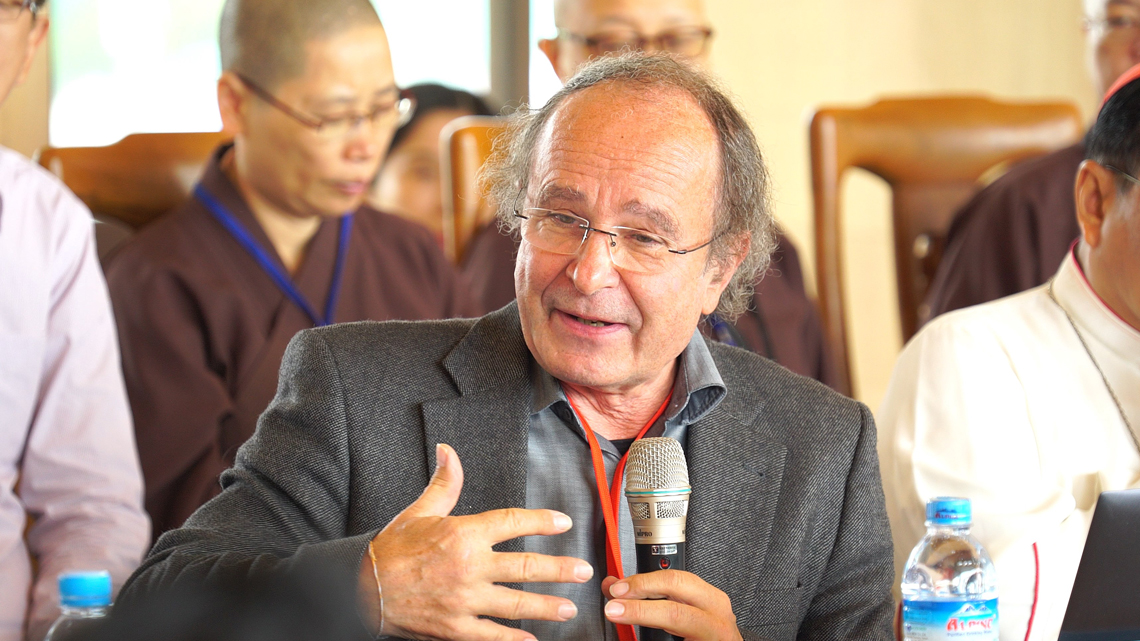

Purpose/Fundamental Strategy/Course Titles of the Syllabus
Purpose
This course is intended for students in Master’s and PhD programs. Its goal is for students to understand the deep roots of the current ecological crisis from interdisciplinary perspectives, to engage creatively in finding practical solutions to the pressing problems of humankind, through enhancing the training of a mentality (including cognitive and emotional faculties) that is ready to engage in concrete action for the betterment of human life in our 21st century global society.
The course follows an interdisciplinary approach, geared for students with backgrounds or area specializations in scientific/technological fields such as physics, chemistry, medicine, engineering, economics, environmental studies as well as humanistic fields such as peace studies, cultural studies, political science, sociology, psychology, theology and related subjects. The course will be conducted by experts renowned in their respective fields. The scholars will reflect on their disciplinary approaches in an interactive way, so as to generate new and relevant questions about our way of life and to find solutions that go beyond compartmentalized understandings of reality.
The course will be conducted in Myanmar, a country that is politically, economically and ecologically most vulnerable, and yet full of opportunities, bringing together experiences of an ancient Buddhist culture faced with the sufferings, struggles and challenges of the present economic and ecological situation of a Third World country, reflecting on new ways to engage in building a better future for its people.
Students would benefit from this cross-over situation, make intense contacts in small groups with intellectual leaders and with each other, working on cooperative projects for further engagement on the level of national and international organizations that deal with the ecological situation, including United Nations Agencies, Think Tanks, Foundations, NGOs, and others. This Winter school provides an ideal setting to network academically, personally and institutionally.
The Learning Goal will be to become familiar with the present frontiers in ecological thinking and to consider how best to implement solutions in in projects and to challenge industrial designs worldwide. Students will have an experience to draw their own consequences from the theoretical and practical input they get, for they will design their own virtual projects that will be discussed and critiqued by the other participants.
Students will receive an academic certificate from the Human Science Centre of the University of Munich, Germany.
Fundamental Strategy
Six Interdisciplinary Areas have been identified for analysis which will start with historical overviews (areas 1-2), move on to basic anthropological, psychological and structural themes (areas 3-4) and continue with explorations of possible solutions through cognitive and spiritual transformation, and reform of economic structures (areas 5–6).
Six Interdisciplinary Areas:
1. Ecological World Views of Ancient Traditions as well as of major World Religions (Anthropology, History, Religious Studies)
2. Why Did Ancient Civilizations Perish and Why is Humankind Facing an Ecological Disaster Today? (Anthropology, History, Religious Studies, Ecosciences)
3. Major Reasons for a Lifestyle out of Balance (Aggressivity, Greed, Social and Economic Forces) and Realistic Possibilities for Change (Empathy and Resources for Proper Decision Making) (Neurosciences, Philosophy, Religious Studies, Psychology, Buddhist Studies)
4. Cooperation and Competition in Social Systems (Economy, Psychology, Neurosciences, Religious Studies, Law, Biology)
5. New Models of Education: Holistic Views on Creativity, the Realization of Interdependency and Sustainable Life Styles (Psychology, Philosophy, History, Buddhist Studies)
6. Economics and Ecology: Toward a Vision of An Ecologically Sustainable Economic System (Ecosciences, Economics)
Course Titles of the Syllabus
.jpg)
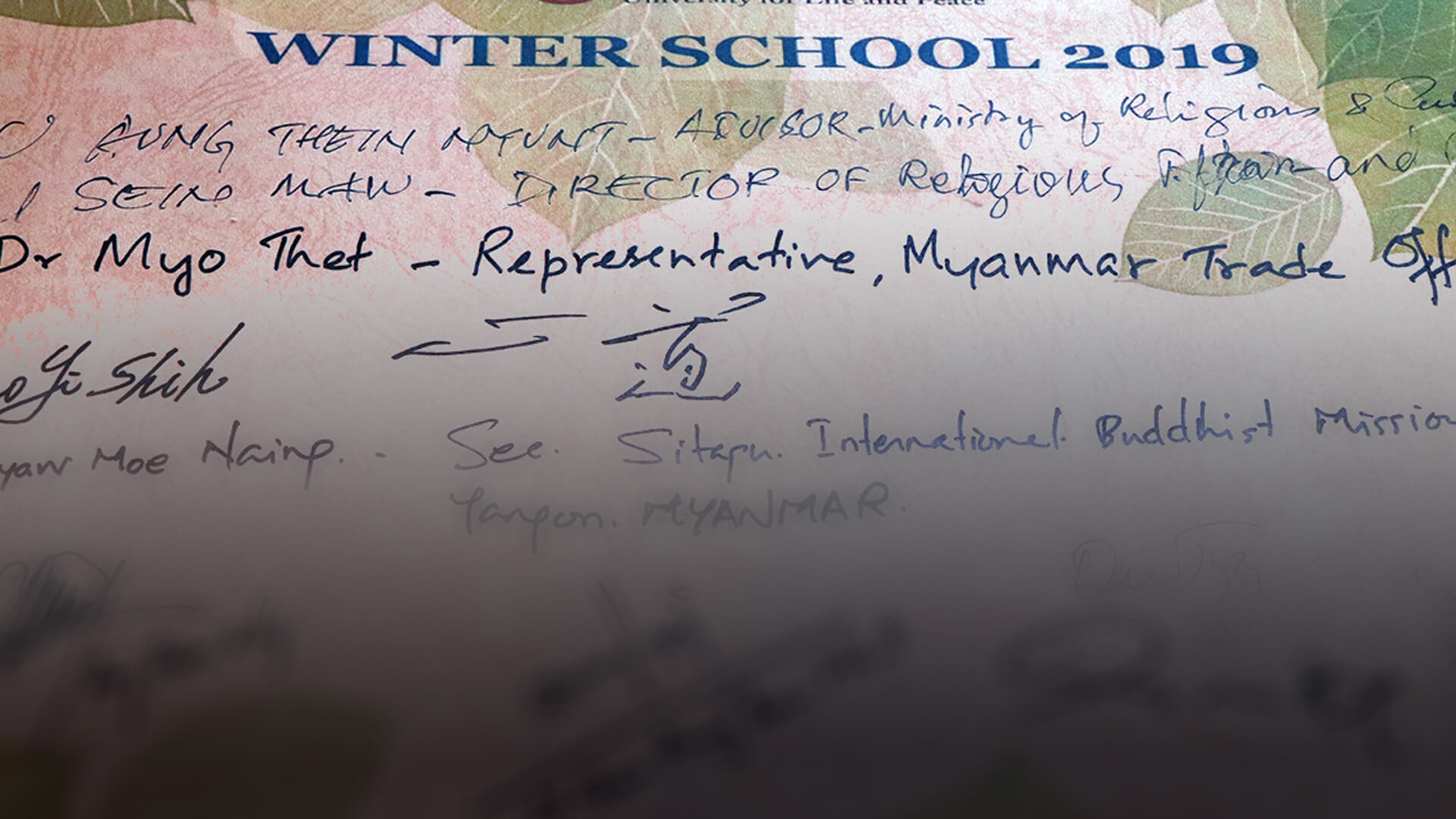
Turning Life around with Education: The Big Learning of Life & Peace from Childhood onward
Dharma Master Hsin Tao said that ‘we (the Ling Jiou Mountain) aspire to create a world-class university of religion that can carry on the life education, revitalize a spiritual education, and assure deep rooting for social and cultural education. We aim at cultivating Buddhist missionaries while instilling collectively in our students a holistic ideal and religious care to help build a peaceful and harmonious life from within them individually.' As a result, the University for Life & Peace has begun to take up more definite shape in Burma as a gift to the country of Myanmar, a dedication to humanity, and a commitment to the world.
The forward-looking ‘Experimental Winter School 2019 in Yangon, Myanmar’ opened in January with a profound significance both in terms of time and place to mark a meaningful milestone for the materialization of the University for Life & Peace. That was by no means the first time that Dharma Master Hsin Tao made an educational endeavor, as ‘to educate is to teach Buddha’s ways’ has forever been the core and essence of what the Venerable Hsin Tao Master strives to implement. War-orphaned and left in poverty growing up, the Master’s personal childhood experiences made him acutely aware of how life is for the underprivileged. Our world would be missing out on a grand Chan master, had he not received help and support from kind-hearted people for an education otherwise.
Suppose life is a house, then education constitutes its pillars. The stronger the pillars are, the sturdier the house is. But in rural villages in remote northern Myanmar, life in general is too harsh to prioritize education for children over feeding them first. It is common for children there to encounter poverty, missing school education, child trafficking, abuse of substance, abduction to become child soldiers, etc. After a long and hard deliberation, education emerges as the last resort to help turn life around for the children there.
Thus came the Naung Mon Project into being in Lashio in northern Myanmar. The early phase of the Naung Mon Project for about a decade saw a focus on helping local farmers re-shape their economies by providing job opportunities to minority farmers, when the Project was run mainly as an eco-farm specializing in organic plantation that practices fair trade. The Project was an integrated, multi-purpose betterment plan to improve the quality of both life and education for the people to eventually overcome poverty by becoming economically self-reliant.
Construction for the campus began at Naung Mon in 2015 in the hope that a Buddhist education shall spread peace, with the support of other plans such as the improvement of soil and the transformation of staple food, the additional medical resources and services, as well as the introduction of the concept of ‘Building Green’ to decrease environmental impact and material waste for the ultimate purpose of constructing buildings that are environmental-friendly and conducive of sustainability. It was furthermore hoped that such ideals and know-how can be passed on to the local construction teams for lasting permeation through all local communities.
June 2016 saw the Sramana School of Maha Kusala Yama Monastery in Naung Mon begin to accept pupils who, besides acquiring the teachings of Buddha, would have a curriculum that abides by the standard prescribed by the Myanmar authorities. In order that the Sramanas would develop a multifaceted capability, the thematic learning of the Buddhist studies encoporates morning sessions, evening sessions, the Pali language, and general studies of the Dharma. Courses of basic education in language, mathematics, science, history, geography, etc., are conducted in Burmese, Chinese, and English. Group activities of PE, music, calligraphy, gardening, etc., are also built into the curriculum to enhance the pupils’s grasp of group learning and community interaction. Bhikkhus will play life coaches to supervise their daily routine and help them grow into strict regimen required of practicing Buddhists.
The University for Life & Peace will be dedicated to the ideal of ‘Love & Peace’ substantiated by ‘Caring about Life for Humanity / Awakening Spirituality by Practice’ for its educational objectives. The University has been designed to be a campus to materialize and construct a physical structure to manifest the global ethics of ‘Respect, Tolerance, Love’. The Sramana School, on the other hand, shoulders the mission to root deeply and spread out widely to afford increasingly more children the opportunity to turn their life around. In so doing, the country Myanmar opens up herself to embrace the world and vice versa.
The progression of the University for Life & Peace, from the Sramana School at Naung Mon in 2016 to the Experimental Winter School in Yangon in 2019, is a journey of a series of Big Learning of Life & Peace from childhood onward. Besides marking a meaningful milestone, its significance lies in becoming a manifestation and a reminder that the world ought to become aware of deep roots of the Earth’s crises, and to solidify our collective consciousness of ‘Loving the Earth’ for actions to resolve root cause of our ecological crises. Everyone is cordially invited to join us and take that first step to jumpstart the power for changes and for awakening the spirituality. Come join us and build a University for the Earth’s safety and its sustainability.
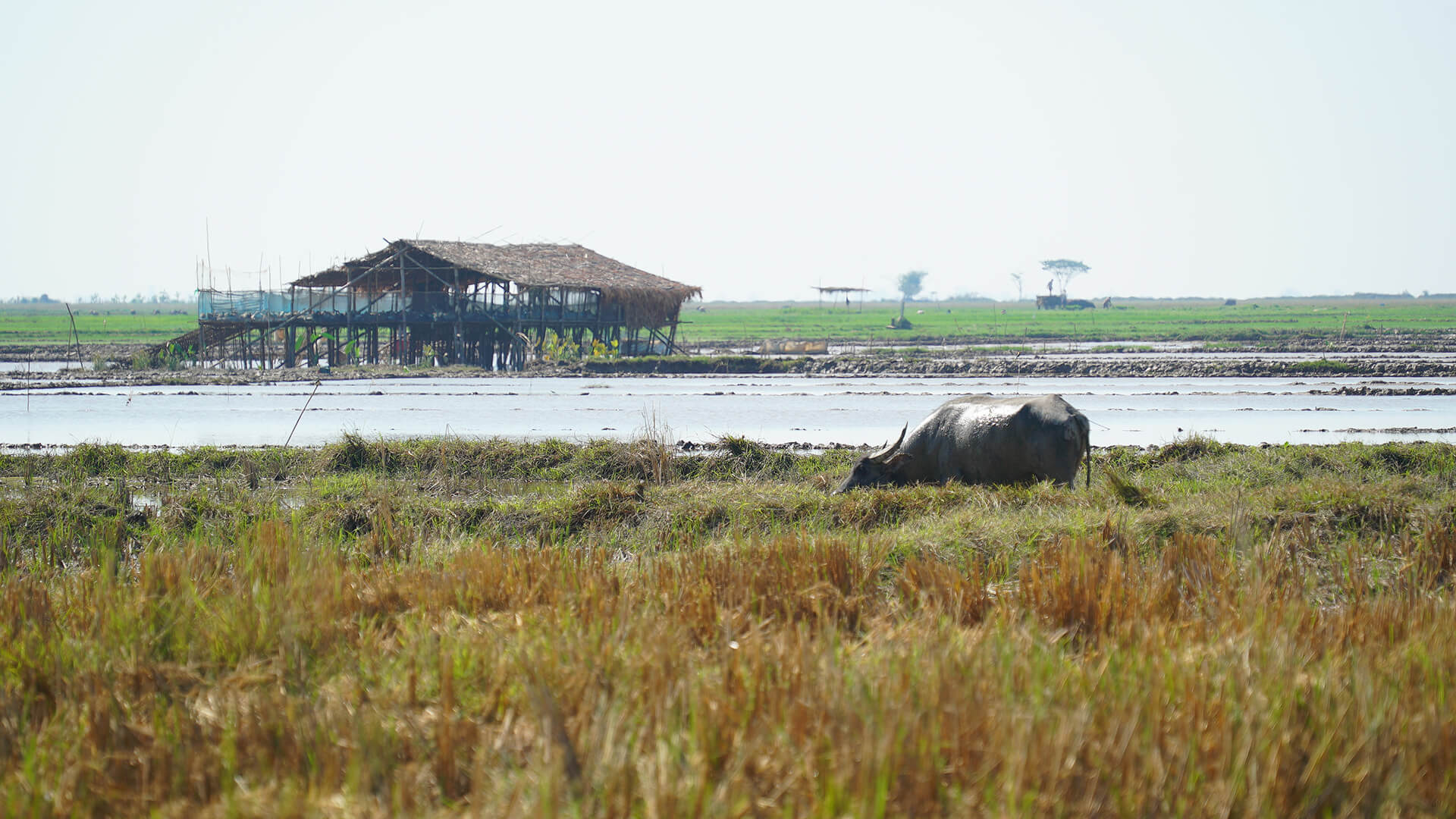
LJM Endorses Wetland Protection, Lighting 10,000 Lamps at Shwedagon Pagoda
The Winter Experimental School of Ling Jiou Mountain’s University for Life & Peace in Yangon has been running with a tight schedule for its courses, which accommodates meaningful extracurricular visits including a field trip to a conservation area of wetland, a visit to the State Pariyatti Sasanta University, as well as to the famous Shwedagon Pagoda billed as one of the Seven Wonders of the World to light up 10,000 lamps in prayers of world peace and blessings for our battered Earth. The University for Life & Peace manifests LJM’s dedication and hope that it would become a concentration of positive karma the world over.
Ecological crises in recent years have brutally shown harsh realities of an endangered Earth, with extreme climate, extinction of specimens, endless calamities triggered by severe environmental pollution but a few painful examples. By a sharp contrast the world has also learned about the long-term dedication to a global education of spiritual ecology on the part of Dharma Master Hsin Tao, Founding Abbot of the Ling Jiou Mountain, on the basis of “Loving the Earth, Loving Peace”. Master Hsin Tao teaches us that our world is a life community substantiated by a “diversified symbiosis and an interdependent co-existence”. The Master therefore hopes to awaken a positive cycle of people’s spirituality with the help of religions to impact the Earth’s magnetic field and restore Nature’s ecology to keep the Earth safe and to secure sustainability.
DSC07945.jpg)
Dharma Master Hsin Tao led the delegation of some 50 members as faculty and students of the University for Life & Peace on a visit to the Moe Yun Gyi Wetlands under protection by the Myanmar government. Initially certified by the authorities as Myanmar’s first protected area of wetland in 2004, with approval for ecological tourism accessible to five thousand visitors per month and many jobs were created for the local communities. An international accord of wetland was signed in 2005 with a validity of 50 years to help promote and secure Nature’s sustainability.
Representative of the Myanmar Trade Office in Taipei Myo Thet pointed out that there are more than 300 types of wild plants and insects among other life forms exist in colonies in the wetland area. Migrant birds from Siberia also make it their habitat here for the winter. This offers a glimpse into the interdependent symbiosis between people and the environment, and life forms amongst one another, to make it utterly clear what Nature’s inter-reliant ecology is about. Now that Master Hsin Tao has decided to build up the University for Life & Peace in Myanmar, Representative Myo Thet stressed that he would throw himself 100% behind LJM to support the commitment and endeavor back-to-back.
DSC08694.jpg)
Myanmar is the country where original Buddhism has been kept intact, and as such, it is a Buddhist Pureland, where faith is life and vice versa. Yangon has always been the center of religion, where Buddha’s footprint could be traced almost everywhere. Dharma Master Hsin Tao led the delegation of the University for Life & Peace’s faculty and students to the Shwedagon Pagoda to light up 10,000 lamps around the historic monument and further dedicated two stupas made of flowers that read “Love EARTH” and “Love PEACE”. On site of Myanmar’s national pride, the Master led the delegation in walking around the monument in paying tribute to the Buddha, and lighting up the lamps in prayers for peace and auspices, practicing meditation in the aura of the Pagoda’s field of pure energy. The compassionate Master Hsin Tao picked an auspicious day for the delegation to visit the Shwedagon Pagoda, namely on December 8 of the Lunar Calendar, the anniversary when Buddha Sakyamuni attained Enlightenment. The lamps symbolize the Master’s hope to carry on the ageless wisdom across history that will guide good thoughts and direct vows and actions thereof onto the paths of awakening with no regrets whatsoever.
The University in Yangon that the delegation visited is also the oldest in Myanmar with a history of 100-plus years, and a motto of Truth and Loyalty. The State Pariyatti Sasanta University runs on the backbone of Buddhist studies. Chancellor of the University, Ashin Bhddanta Kumara, has been committing endless efforts tirelessly to the university for Sanghas. Likewise, Dharma Master Hsin Tao has been outspoken and proactive in promoting education and incubating quality manpower. The Master hopes to turn people and life around by virtue of an education that knows no boundaries of country, geography, races or religions, to ultimately become a deliverable campaign with global impact as a worldwide social movement that runs on a twin ideal of “Loving the Earth, Loving Peace”.
DSC08724.jpg)
Lighting a Lamp of Awakening
“The 2019 Winter Experimental School in Yangon, Myanmar” hosted by the University for Life & Peace of the Ling Jiou Mountain Buddhist Society has officially opened on January 10. The 35 members of the faculty and student body are from 14 countries including Germany, the Netherlands, Korea, China, Russia, Banya Bashi Dzhamiya and Malaysia. Showing no signs of jet lag, they looked set to share learning via the group study module aimed at “Addressing the Deep Roots of Ecological Crises: Towards New Strategies”. It would be only fair to expect many brainstorming sparkles from the Winter School.
The screening of the film “The Power of Awakening” at the opening ceremony delivered a clear message of how the Earth is being devastated and that the promotion of peace and the protection of the environment are the top priorities at present. People are not aware that we are the culprits that have been destroying the Earth for the sake of a moment's greed and convenience. Nevertheless, the Earth's current standing is a reflection of the collective consciousness of all humankind on the planet. For any changes that are to be lasting and significant, thus accordingly, individuals and small groups must act to influence bigger communities progressively and ultimately impact the biggest community of them all - namely the entire humankind.
Buddha once said that all sentient beings have Buddha nature. He preached disciples to refrain from taking lives and avoid causing destructions, as humans are in essence merely borrowing resources from the Universe and therefore ought to preserve the natural environment to substitute all kinds of exploitation forced upon Nature. Dharma Master Hsin Tao said that “what we plan to do is to benefit the Earth by awakening the positive cycles of people's heart and mind via religions. We then move on to change the magnetic field of the Earth by way of people's heart and mind towards restoring Nature. We hope to unite spiritual care with professionalism and academics to collectively establish the ‘Principle of Interdependent Coexistence’ for human society.” The Ling Jiou Mountain Buddhist Society appeals to the world to save the Earth with the “Buddhist Economics” that reassesses whether any industries or businesses are friendly or hazardous to the environment. Traditional agriculture, thus accordingly, proves to be environmentally friendly.
An eco-farm at Naung Mon village in the Northern Shan State of Myanmar began plantations in 2006 as a key part of its education plan for Myanmar by the GFLP (Global Family of Love & Peace) initiative of the Ling Jiou Mountain Buddhist Society. The ongoing long-term project strives to create jobs with on-the-job & hands-on training for farmers of local minority communities by virtue of eco-farming and fair trade.
Local farmers are used to traditional farming that encouraged to set fire to the wilderness before the monsoon season. The ashes would then serve as fertilizers when the patty field saw sowing, which began to bud in the raining season when more pesticide and fertilizers would be introduced to grow shining crops bug-free. Strong pesticide such as Paraquat is often used in quantities to reduce demand for labor for weeding. All that is harmful to the soil and the farmland. The Naung Mon Experimental Farm, as a result, began its efforts there by improving soil quality for the agricultural infrastructure, making organic compost and liquid enzyme-based fertilizers as well as creating legume green manure and microbial soil conditioners. Such an undertaking is both labor-intensive and time-consuming and a 3-year minimal is what it would take to show signs of possible changes. An analogy to the sewage system of a city highlights the comparability in that the work is not in plain sight, but it is a basic and fundamental function.
The Naung Mon Farm sees value in practicality, humanity, self-guidance, no willful use of natural resources, dedication to high-value farming and the area’s sustainability. It further affords farmers the knowledge and know-how of organic farming to produce organic essence of oil of vetiver, lemongrass, jasmine, and roses. The farmers’ harvest is further protected by fair trade to make sure they are no longer subject to tiered exploitations. In sum, it is hoped that the Naung Mon Farm sets up a good example of what environmental friendliness is all about.
The originator of the “Buddhist Economics” and author of the pioneering environmentalism classics Small is Beautiful - German statistician and economist Ernst Friedrich Schumacher- said that “when a group of people cut off their ties to Nature, they gradually grow increasingly violent towards Nature, as well as increasingly more violent towards one another.” Thus accordingly, the global populace of 7.4 billion people collectively face an endangered Earth, and now is the time for changes. Dharma Master Hsin Tao says that we as individuals are but one lamp and one illumination. We as a group of people, however, do not light up all at once, but one after another. It is now time for us to start lighting the lamps and hope that the power of awakening will gather for magnitude to cast a beam and shine for world peace.
●E. F. Schumacher(Ernst Friedrich Schumacher)
https://en.wikipedia.org/wiki/E._F._Schumacher

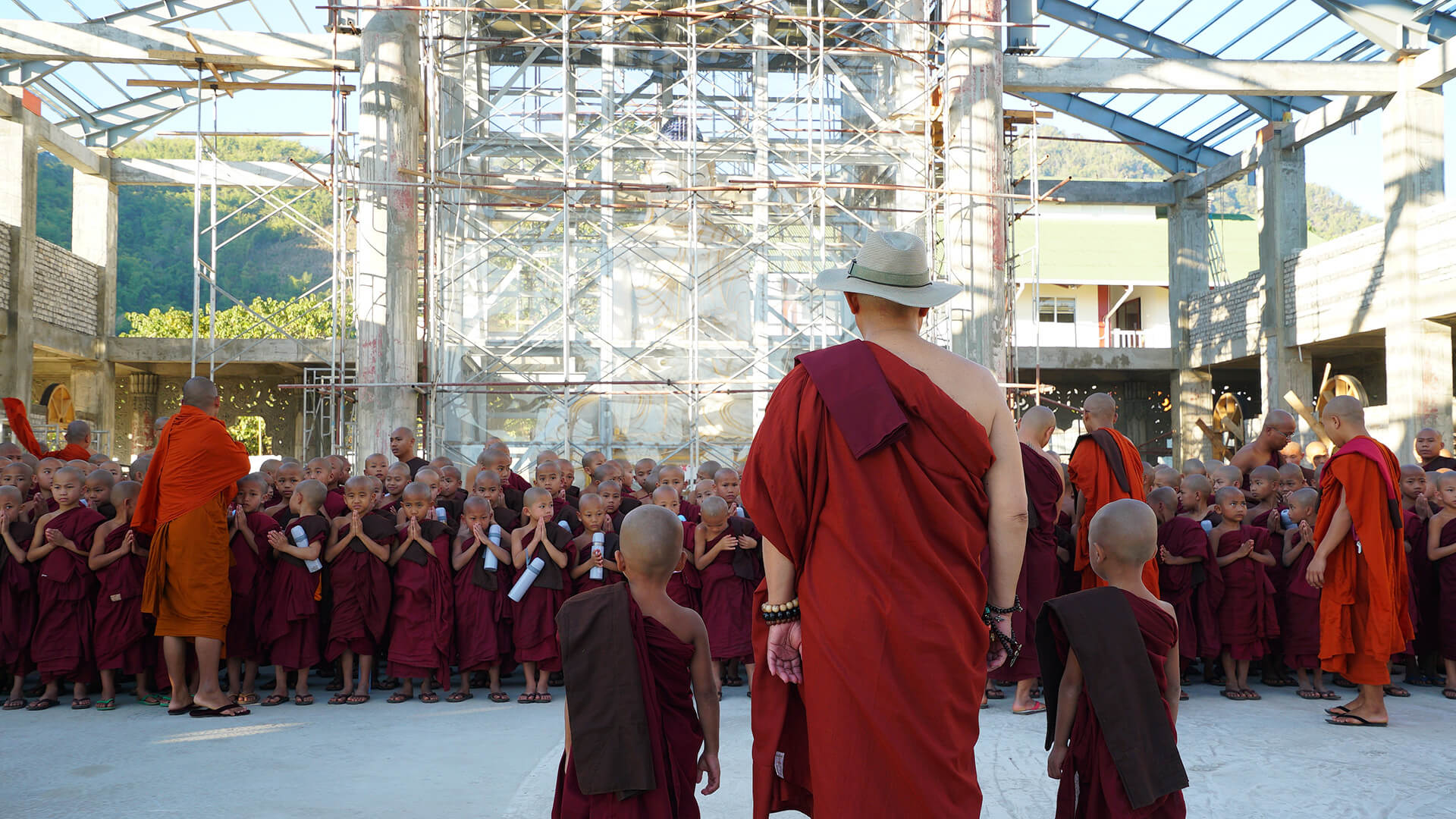
Turning Life around with Education: A Comprehensive Learning of Life & Peace from Childhood onward
Dharma Master Hsin Tao said that “we (the Ling Jiou Mountain Buddhist Society) aspire to create a world-class university of religion that can carry on life education, revitalize spiritual education, and assure deep rooting for social and cultural education. We aim at cultivating Buddhist missionaries while instilling collectively in our students a holistic ideal and religious care to help build a peaceful and harmonious life from within them individually.” As a result, the University for Life & Peace has begun to take up more definite shape in Myanmar as a gift to the country, a dedication to humanity and a commitment to the world.
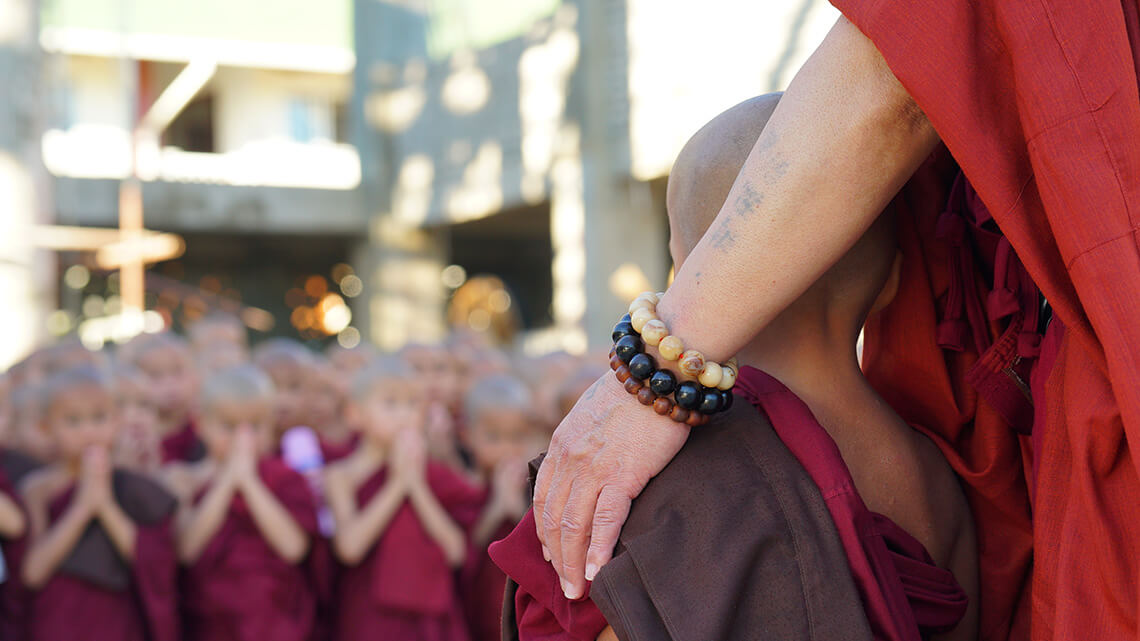
The forward-looking “Experimental Winter School 2019 in Yangon, Myanmar” opened in January with a profound significance both in terms of time and place to mark a meaningful milestone for the materialization of the University for Life & Peace. That was by no means the first time that Dharma Master Hsin Tao made an educational endeavor, as “to educate is to teach Buddha’s ways” has forever been the core and essence of what the Venerable Hsin Tao Master strives to implement. War-orphaned and left in poverty growing up, the Master’s personal childhood experiences made him acutely aware of how life is for the underprivileged. Our world would be missing out on a grand Chan master, had he not received help and support from kind-hearted people for an education otherwise.
Suppose life is a house, then education constitutes its pillars. The stronger the pillars are, the sturdier the house is. But in rural villages in remote northern Myanmar, life in general is too harsh to prioritize education for children over feeding them first. It is common for children there to encounter poverty, missing school education, child trafficking, abuse of substance or abduction to become child soldiers. After a long and hard deliberation, education emerges as the last resort to help turn life around for the children there.
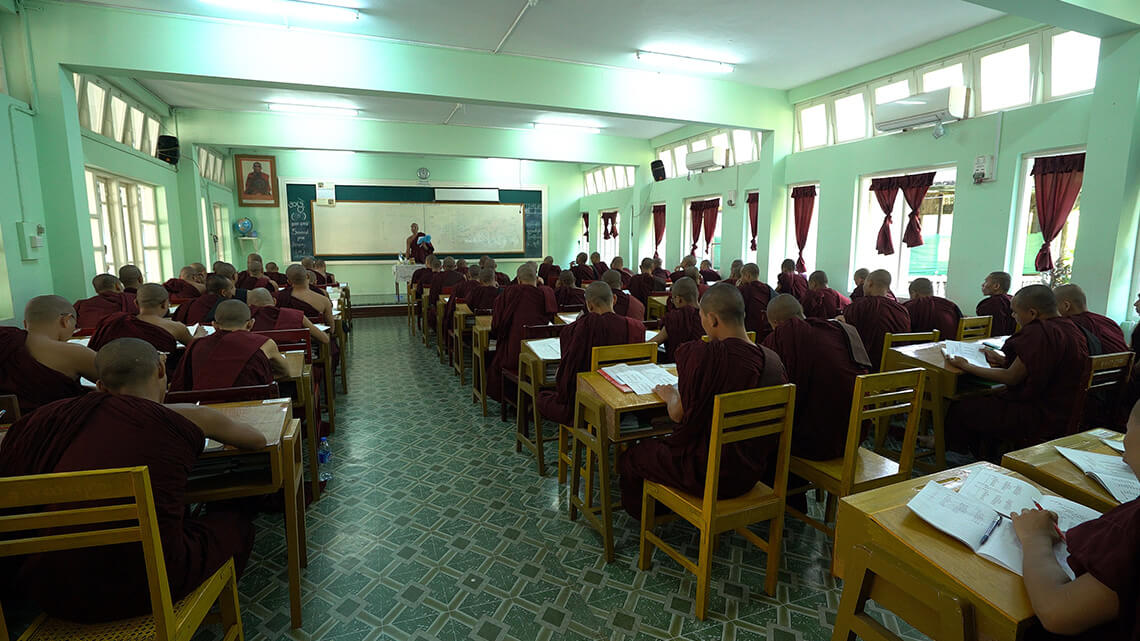
Thus came the Naung Mon Project into being in Lashio in northern Myanmar. The early phase of the Naung Mon Project for about a decade saw a focus on helping local farmers re-shape their economies by providing job opportunities to minority farmers, when the project was run mainly as an eco-farm specializing in organic plantation that practices fair trade. The project was an integrated, multi-purpose betterment plan to improve the quality of both life and education for the people to eventually overcome poverty by becoming economically self-reliant.
Construction for the campus began at Naung Mon in 2015 in the hope that a Buddhist education shall spread peace, with the support of other plans such as the improvement of soil and the transformation of staple food, rendering additional medical resources and services as well as introducing the concept of “Building Green” to decrease environmental impact and material waste for the ultimate purpose of constructing buildings that are environmental-friendly and conducive of sustainability. It was furthermore hoped that such ideals and know-how can be passed on to the local construction teams for lasting permeation through all local communities.
June 2016 saw the Sramana School of Maha Kusala Yama Monastery in Naung Mon begin to accept pupils who, besides acquiring the teachings of Buddha, would have a curriculum that abides by the standard prescribed by the Myanmar authorities. In order that the Sramanas would develop a multifaceted capability, the thematic learning of the Buddhist studies incorporates morning sessions, evening sessions, the Pali language, and general studies of the Dharma. Courses of basic education including language, mathematics, science, history, and geography are conducted in Burmese, Chinese, and English. Group activities such as PE, music, calligraphy and gardening are also built into the curriculum to enhance the pupils’ grasp of group learning and community interaction. Bhikkhus will play life coaches to supervise their daily routine and help them grow into strict regimen required of practicing Buddhists.
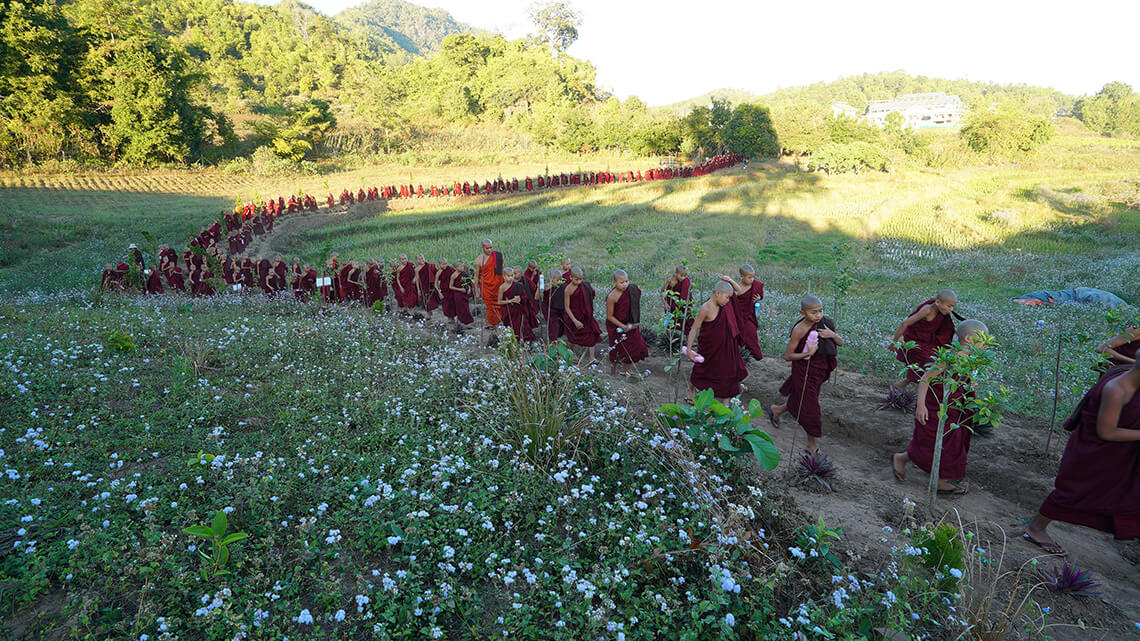
The University for Life & Peace will be dedicated to the ideal of “Love & Peace” substantiated by “Caring about Life with Humanity and Awakening Spirituality by Practice” for its educational objectives. The University has been designed to be a campus to materialize and construct a physical structure to manifest the global ethics of “Respect, Tolerance, Love”. The Sramana School, on the other hand, shoulders the mission to root deeply and spread out widely to afford increasingly more children an opportunity to turn their life around. In so doing, the country Myanmar opens up herself to embrace the world and vice versa.
The progression of the University for Life & Peace, from the Sramana School at Naung Mon in 2016 to the Experimental Winter School in Yangon in 2019, is a journey of a series of comprehensive learning of Life & Peace from childhood onward. Besides marking a meaningful milestone, its significance lies in becoming a manifestation and a reminder that the world ought to become aware of the deep roots of the Earth’s crises and solidify our collective consciousness of “Loving the Earth” for actions to resolve the root cause of our ecological crises. Everyone is cordially invited to join us and take that first step to jumpstart the power for changes and for awakening the spirituality. Come join us and build a university for the Earth’s safety and sustainability.
